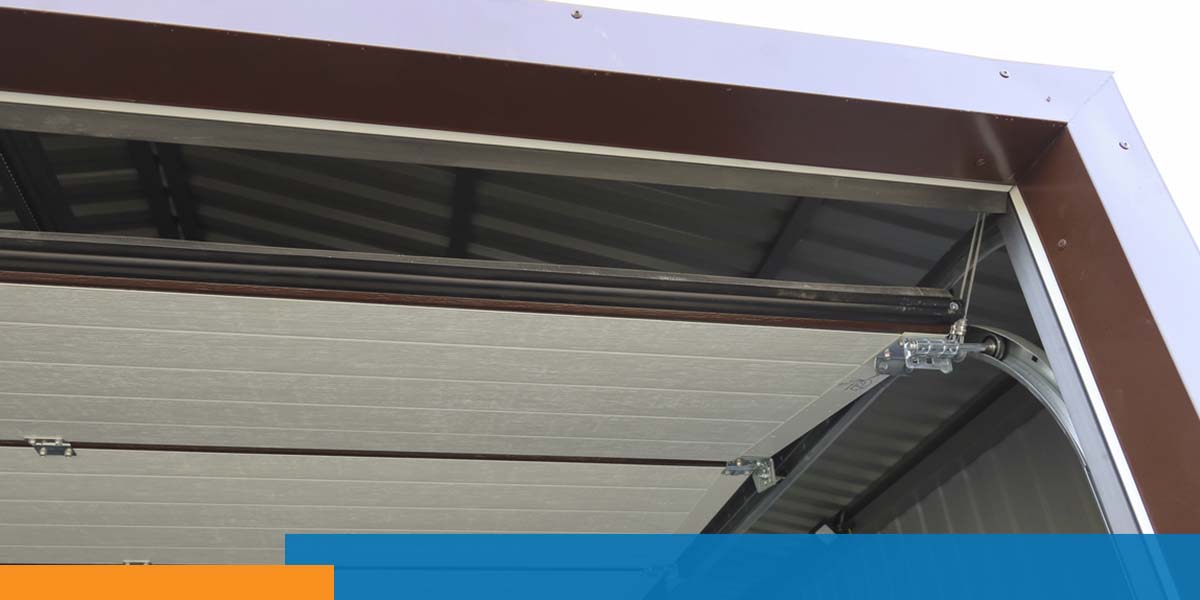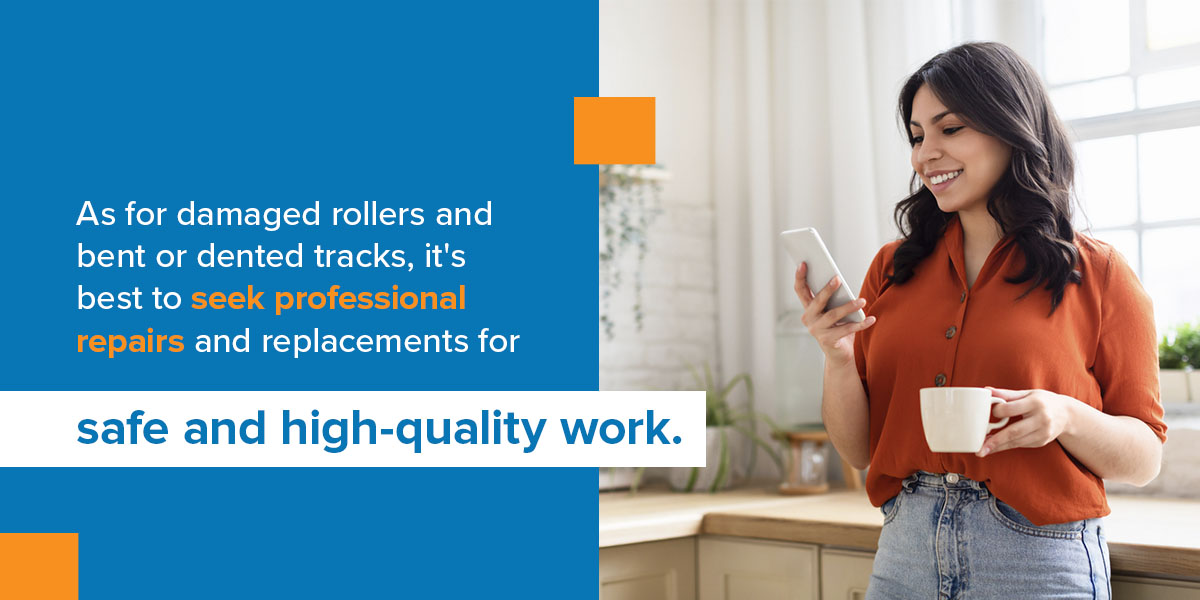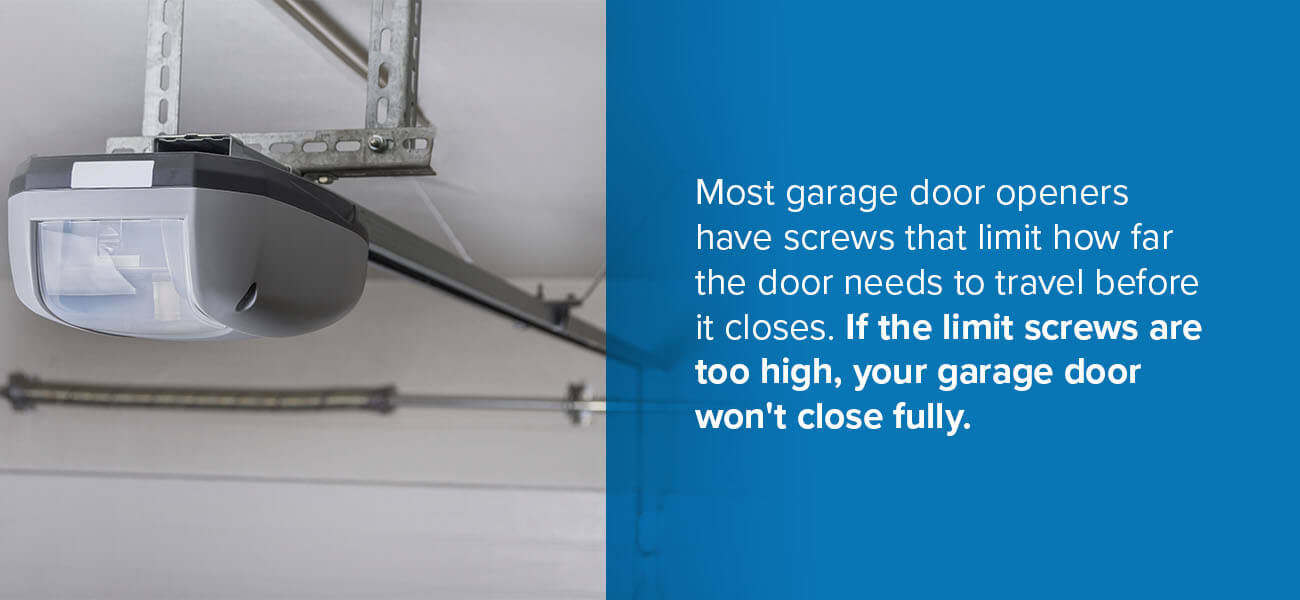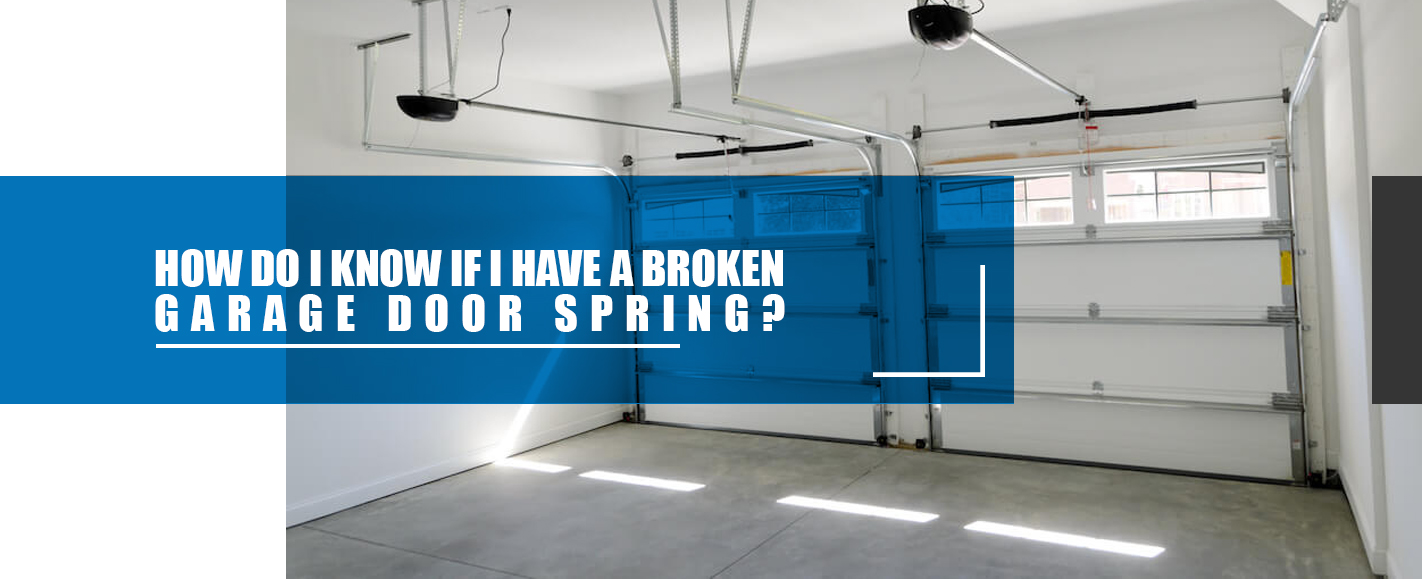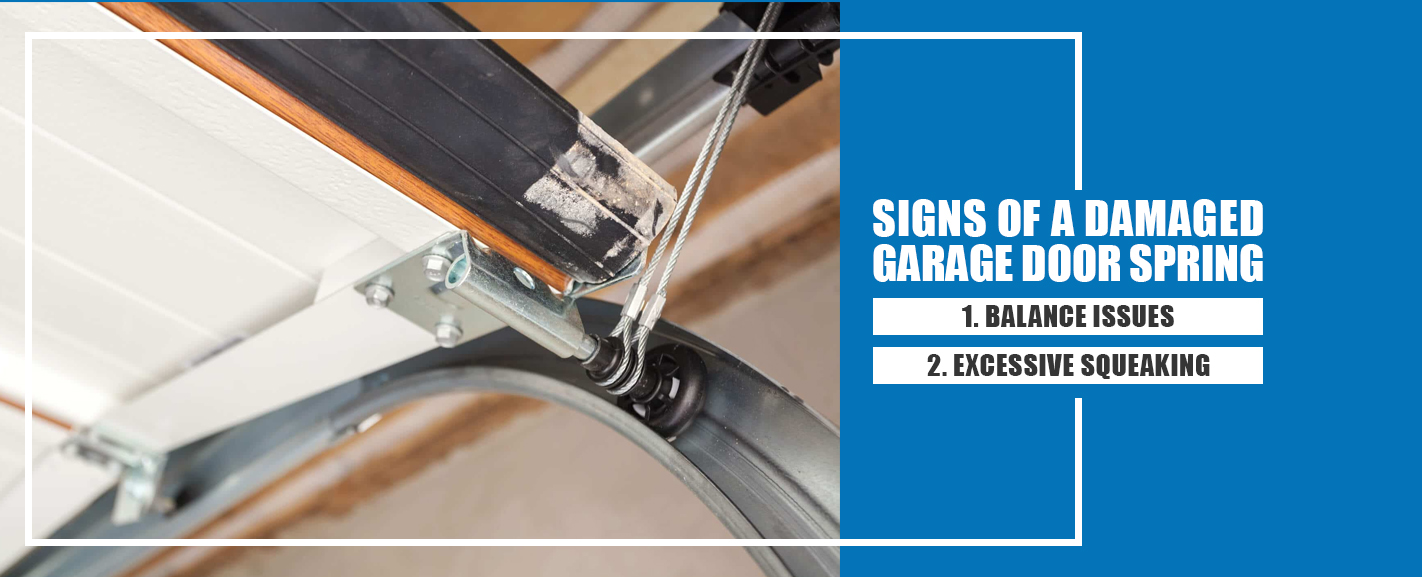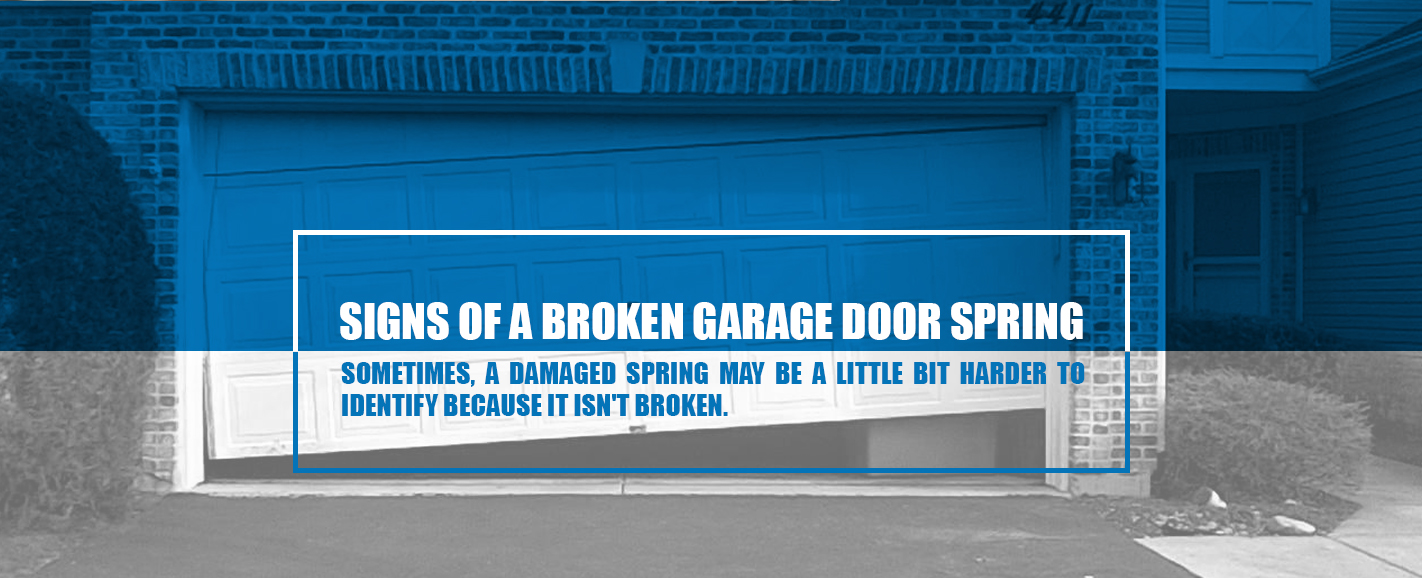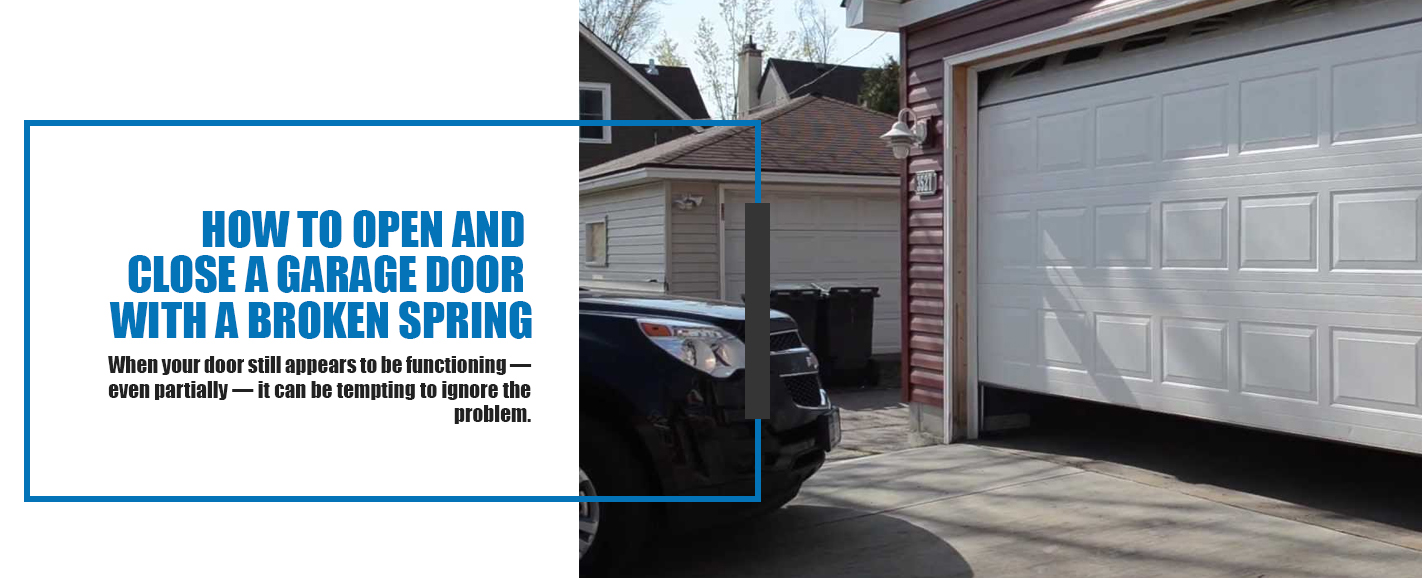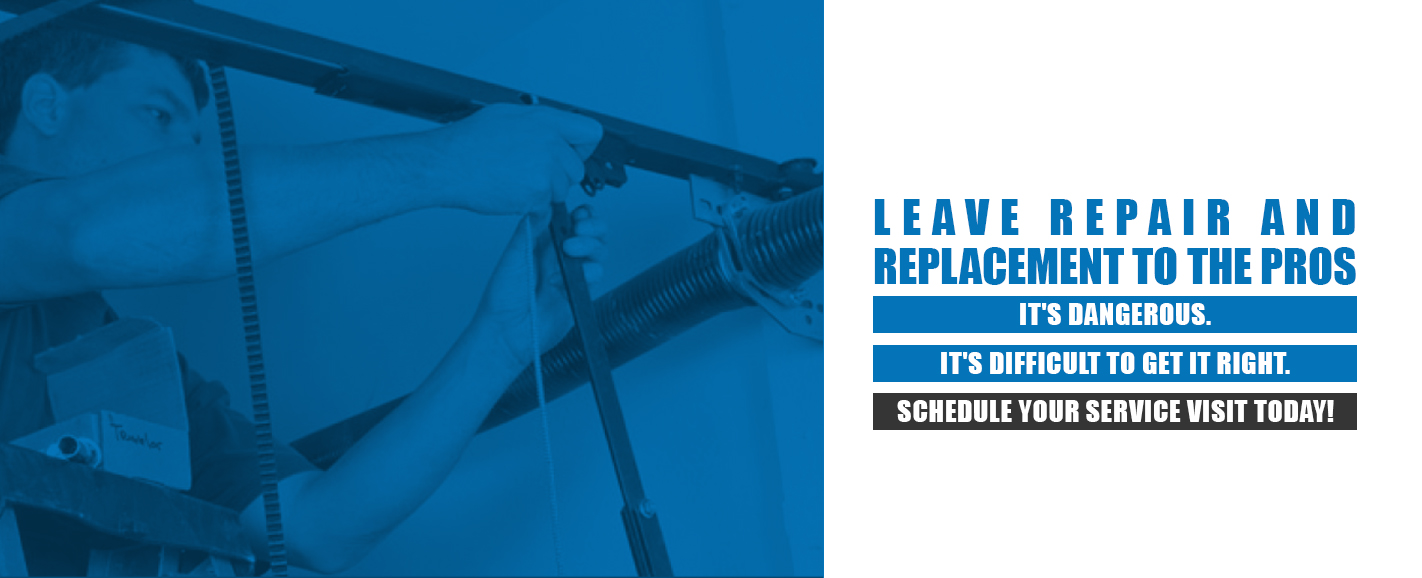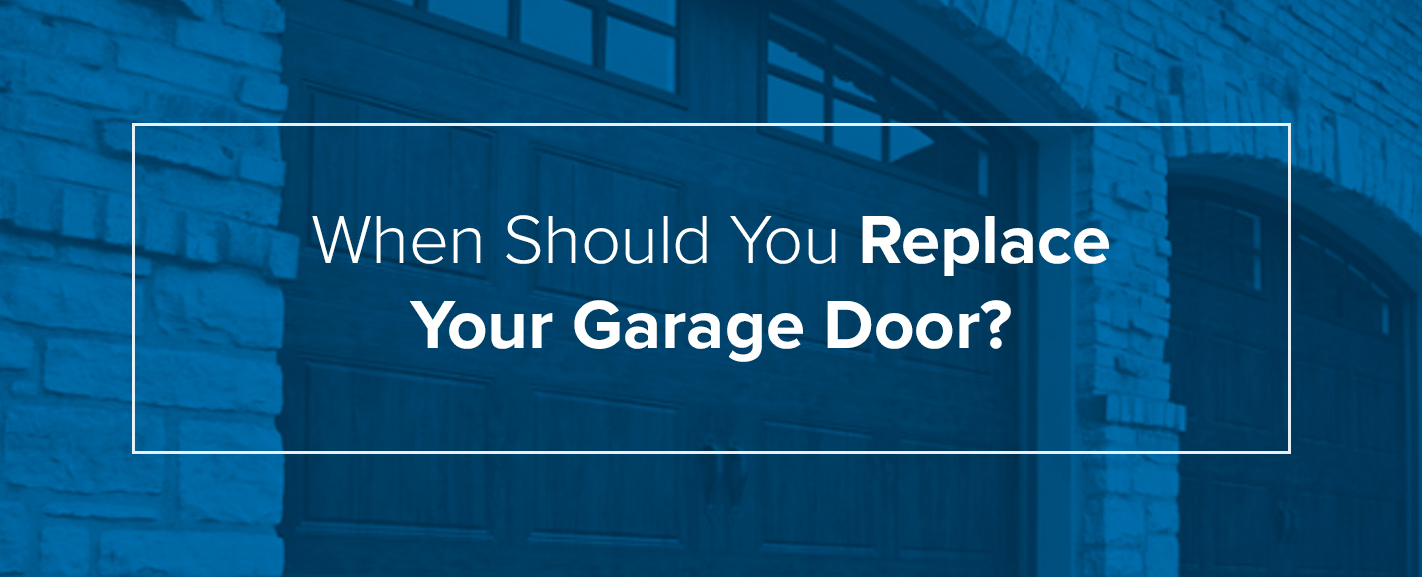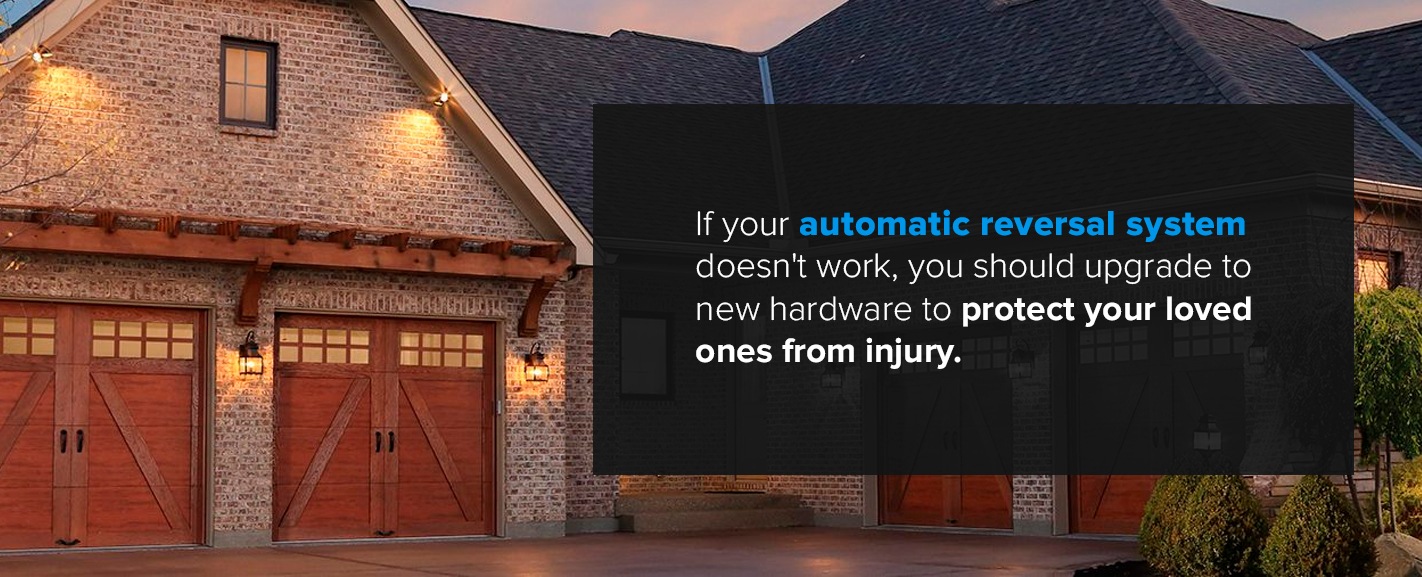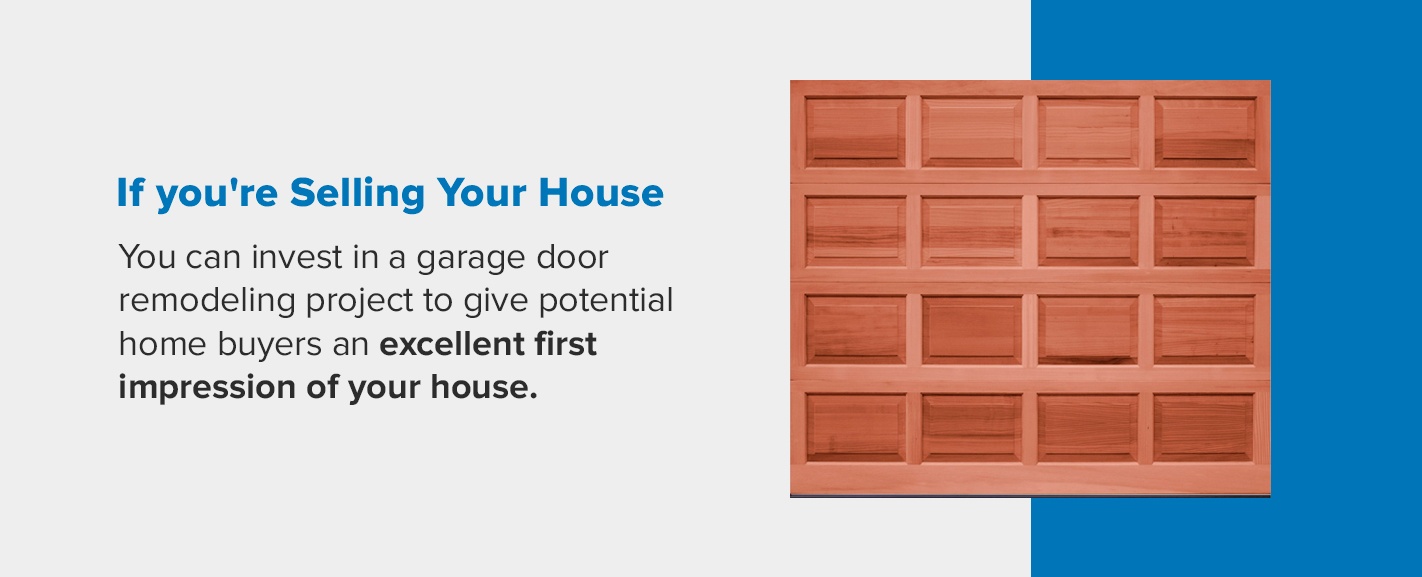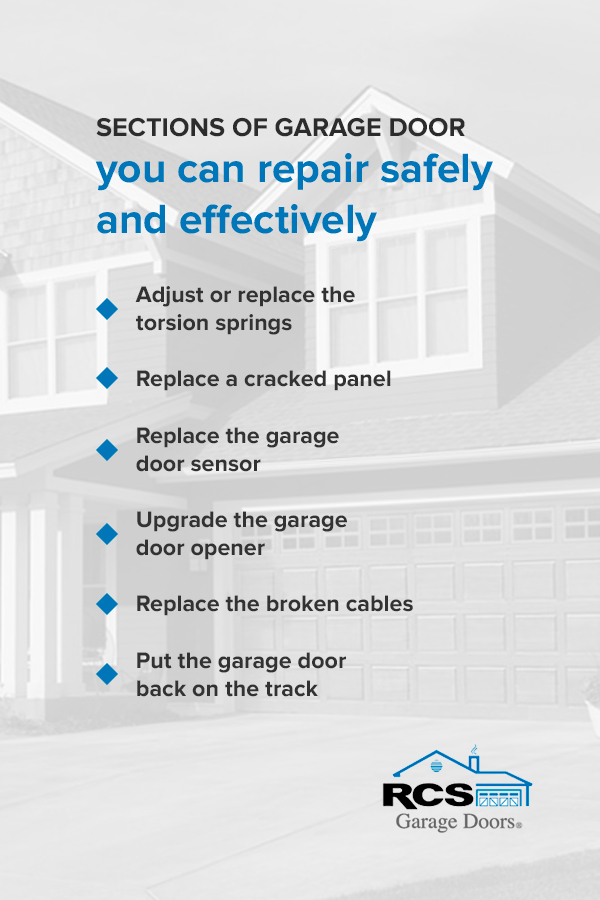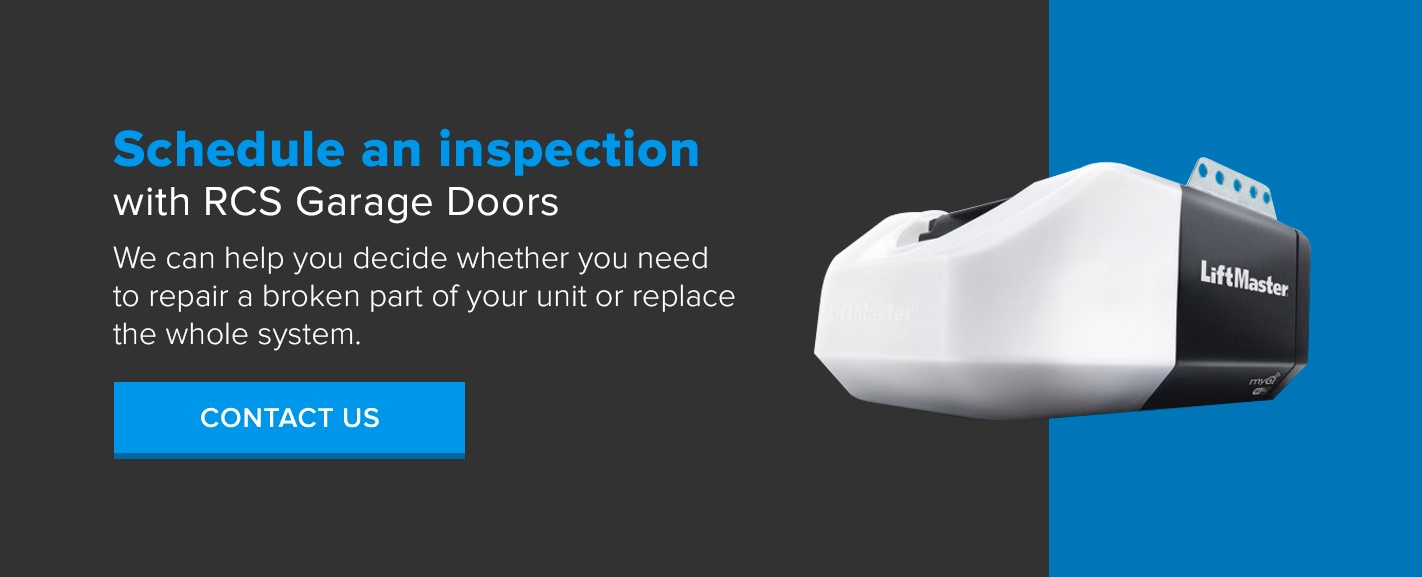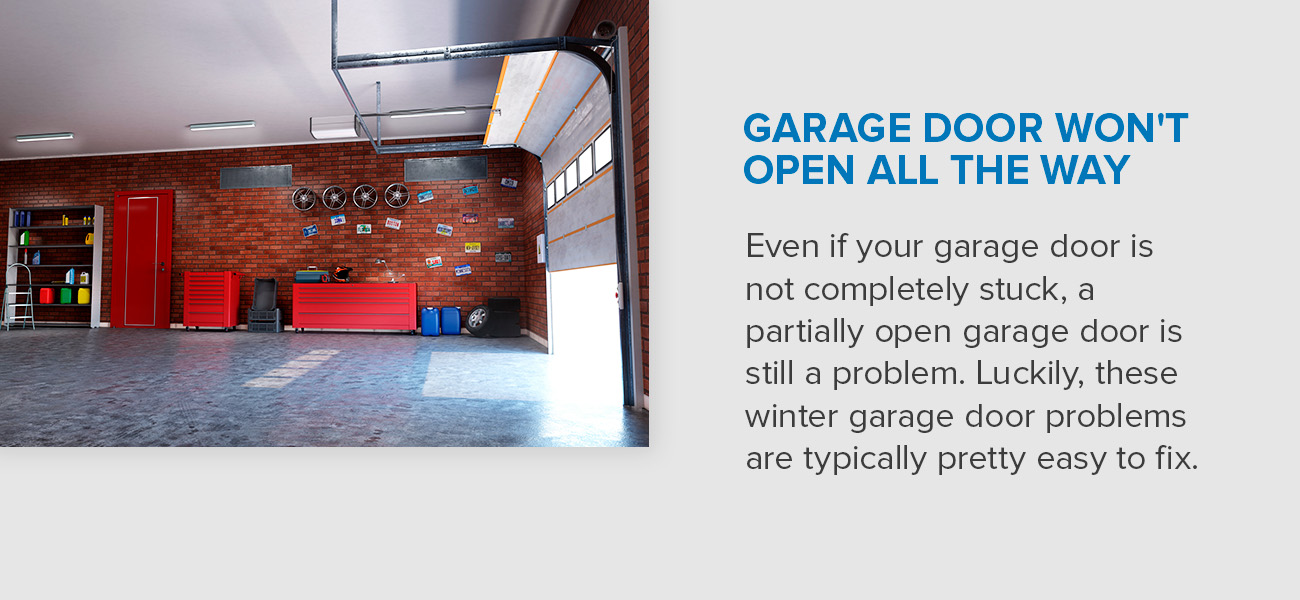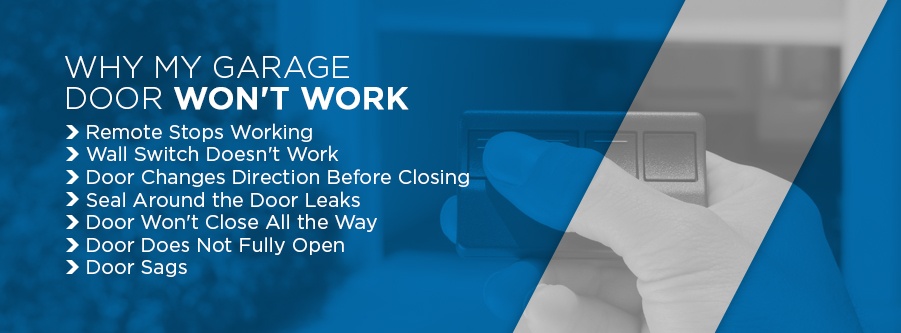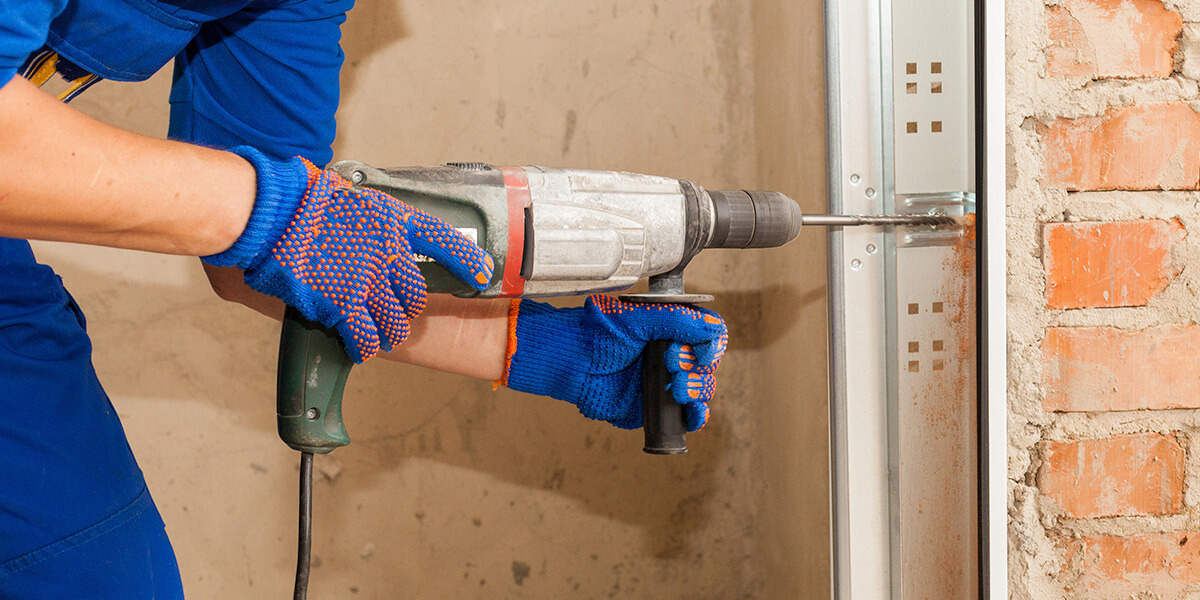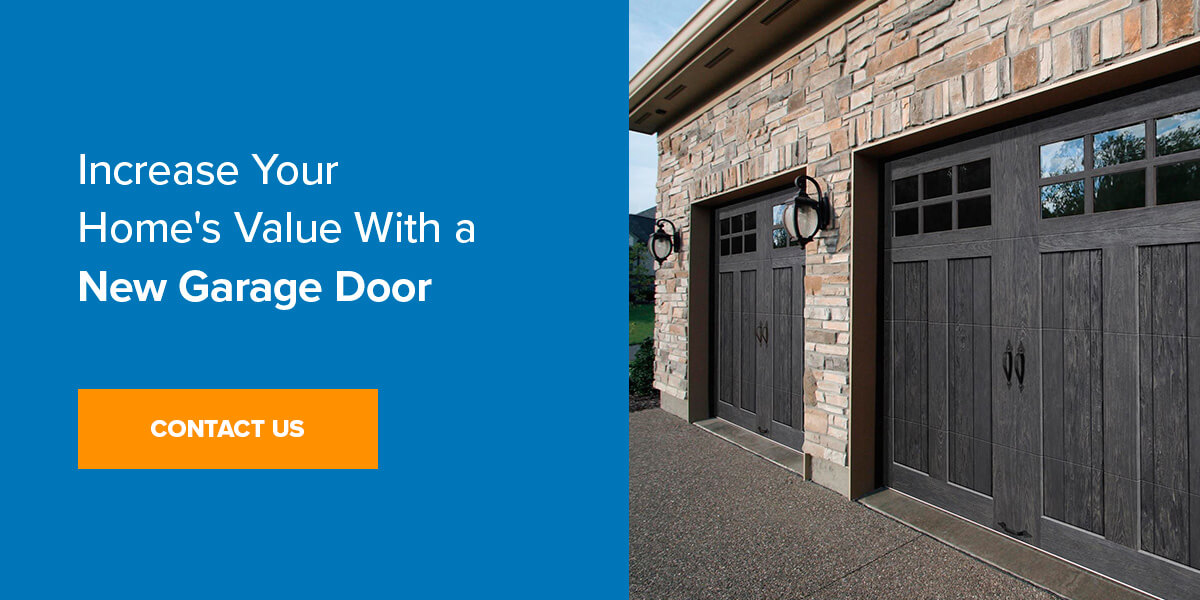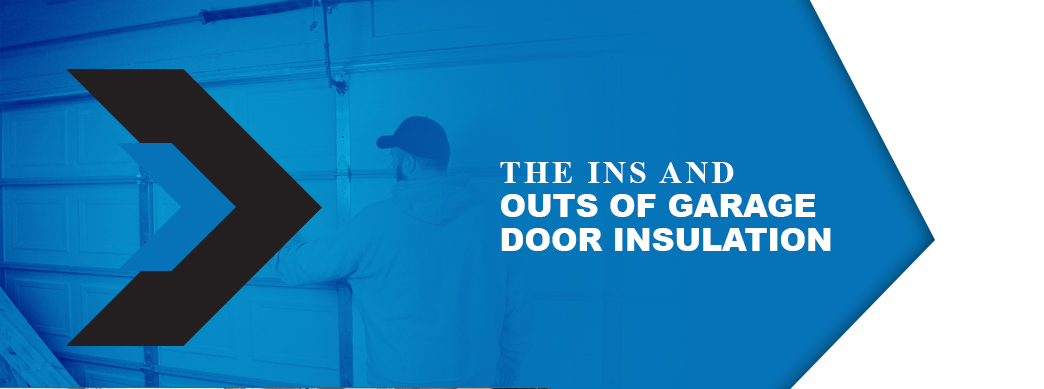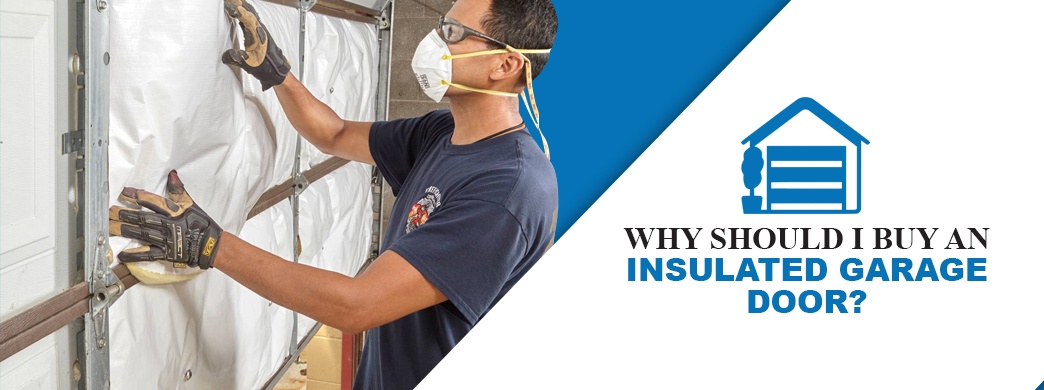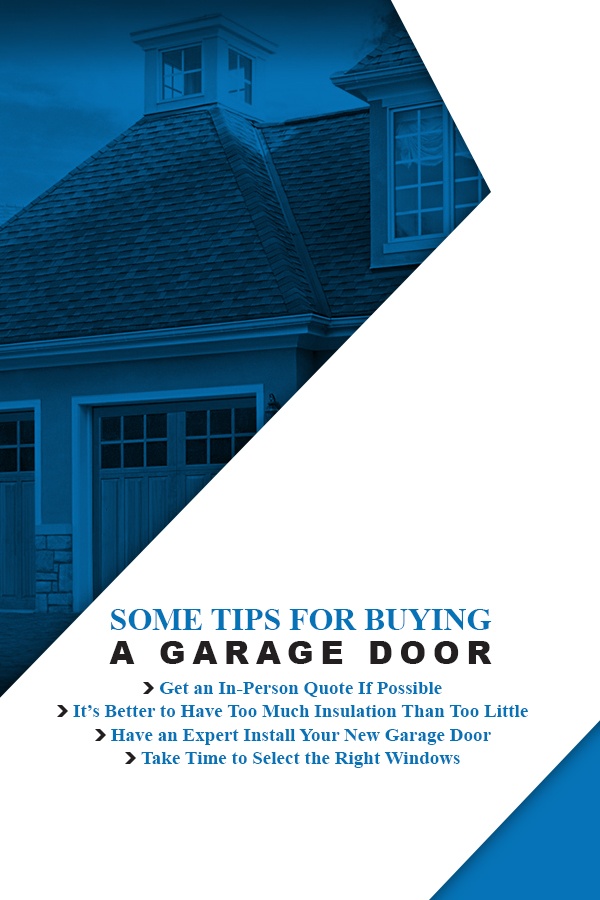Why Won’t My Garage Door Close?
When leaving for work this morning or returning home, was your garage door refusing to close? While an uncooperative garage door is inconvenient for homeowners, several possible explanations exist for why your garage door is not closing.
The most typical reasons your garage door won’t close are mechanical issues or a garage door opener motor malfunction. You can repair some of these garage door issues with minor adjustments. Other problems are too complicated or hazardous for homeowners to replace themselves and require the assistance of a local garage door repair company.
As you look for the cause of your garage door closing problems, note whether the garage door won’t close all the way, won’t close with the remote or if the motor is running but the door won’t lower. If your garage door won’t even close manually, there could be a serious issue.
Call Our Service Team For Help
How to Fix a Garage Door That Won’t Shut
If your garage door won’t close, one or more components may have failed. That also includes the garage door opener, which is an extension of your garage system. Here are quick ways to troubleshoot and fix a garage door that won’t close:
1. Examine the Garage Door Opener
Most homeowners rely on garage door openers, which use electric motors to open and close garage doors. If these devices malfunction during operation, the door won’t open or close automatically. The most likely culprit with door openers is power delivery. Confirm that the garage door opener receives power and responds to the remote control.
You also want to check that the remote works. Try shutting the door using the wall console, and if it works, replace the batteries on your remote and confirm that it’s still programmed to the opener.
2. Clear Obstructions
If the opener looks fine but the garage door still won’t close, there could be something obstructing it. It’s likely that the obstruction is around the tracks and rollers, two key components that allow your garage door to roll up and down. Use a rag or brush to clear dust and debris from the tracks to ensure nothing blocks the door’s path. Also, check that the rollers are not stuck.
Rust and dents along the tracks or damaged rollers can also prevent smooth movement. If the issue is rust, lubricate with white lithium or a silicone-based product. As for damaged rollers and bent or dented tracks, it’s best to seek professional repairs and replacements for safe and high-quality work.
3. Clean and Align the Sensors
Modern automated garage doors have safety sensors on either side of the door opening near the bottom. These sensors detect objects on the door’s path and send a signal to the garage door opener to stop the door from closing and reverse.
If your garage door won’t go all the way down, the sensors may be preventing it from closing. Try cleaning the photo eyes as dirt interferes with the infrared beam, which may cause false signals. False signals can also occur due to sensor misalignment. Loosen the receiving sensor and adjust it to align with the transmitting sensor.
If your garage door still won’t close and your sensors are aligned, make sure they receive power and check the wiring for damage. If the wires are damaged, you’ll need to replace them. If you’ve checked over everything and still can’t find the issue, it’s likely a sensor failure. If so, you’ll need a new sensor.
Travel Limits
4. Adjust the Limit Screws
One of the reasons a garage door won’t close all the way is the door opener limit screw being less than what you need to fully shut the door. You can fix this issue by adjusting the down limit switch on the side of the motorhead.
With the door closed as it is, measure the space between the garage door and the ground. Using a screwdriver, turn the screw while testing the door with each turn until it travels the remaining distance to the ground. You can refer to your manual to determine how much you need to turn the screws.
5. Have Broken Springs Replaced
A broken torsion or extension spring is a possible reason your garage door won’t properly close. These high-tension springs support the weight of your garage door, and if they snap or crack, they will cause a misalignment, preventing the door from closing properly.
While replacing broken garage door springs can correct misalignment and allow the door to close, it’s not a safe task for a homeowner to take on. Bring in garage door experts because handling springs can cause further damage or serious injuries if you lack the experience.
FAQs
Here are frequently asked questions about garage doors failing to close:
Why Won’t My Garage Door Shut?
A garage door may not shut for several reasons, such as garage door opener problems, obstructions, sensor issues, incorrect limit screw settings and broken springs, among others.
Why Is My Garage Door Blinking and Not Closing?
There could be an issue with your garage door opener. Other potential causes are engaged automatic or physical locks, sensor failure and wiring problems.
Why Does My Garage Door Keep Opening After I Close It?
Your garage door might keep opening every time you close it due to safety sensor issues, loose or damaged wiring, obstructions, remote or wall console issues, and garage door opener malfunctions.
For Quality Garage Door Repairs, Contact RCS Garage Doors
For the best, most knowledgeable and reliable garage door repair and maintenance services throughout North and South Carolina, contact your local experts at RCS Garage Doors. Our professionals will do whatever they can to make sure you can close your garage door.
We have over 30 years of experience serving homeowners in North and South Carolina. We believe in offering our customers affordable, quality garage door services using only the best products and materials available to guarantee lasting, dependable repairs. Request service today!
How to Tell if a Garage Door Spring Is Broken
Table of Contents:
- What Is a Garage Door Spring?
- Signs of a Damaged Garage Door Spring
- Signs of a Broken Garage Door Spring
- How to Open and Close a Garage Door With a Broken Spring
- Get Help From Experts
If you’re like most people, your garage door gets more use than your front door. It’s the primary entry and exit point of your home, which means your garage door is going up and down several times a day, an action you typically take for granted as you push a button on your way in or out.
Then, one morning, your garage door doesn’t open. Suddenly, it’s not as simple as pushing a button and backing your car out. Now, you have a problem, and you need to find a solution.
While there could be several reasons for a malfunctioning garage door, one of the most likely explanations is that your door has a broken torsion spring.
Garage Door Spring Repair Services
What’s that, you ask? And what am I supposed to do about it?
Don’t worry. Most homeowners don’t know much about the mechanics of their garage door, and that’s OK. In fact, in 2014, the U.S. Consumer Products Safety Commission reported an estimated 18,000 garage door-related injuries. To avoid being included in this statistic, it’s better to leave garage door repair to professional repair companies, which means homeowners don’t need to be experts about their garage door.
However, if you own a home with a garage, it’s essential to understand the mechanics of your door, so you can easily identify a problem. By doing this, you’ll have an easier time figuring out whom to call, and you’ll have your door operating back at its full capacity even sooner.
What Is a Garage Door Spring?
You’ll find the garage door’s spring along the top of the door inside your garage. It’s substantial and very evident. It connects to cables that wind up when you activate the garage door opener — where these cables are and how they operate depends on what kind of automatic opening system you have. This spring is essential to the functioning of your garage door. As the cables turn, the tension increases on the spring, pulling the door up. If it becomes broken or damaged in some way, it won’t operate properly, resulting in a door that doesn’t open correctly — or open at all.
Springs on a garage door should be durable. In fact, on average, they should last through 10,000 cycles of opening and closing your garage door. However, just like anything else, over time they can wear out or become damaged in some way. Ideally, homeowners should have a professional garage door repair service come out to service the springs on their garage door. This service doesn’t need to happen that often, but as your door starts to age, it’s crucial to take notice of how it’s operating and have it properly maintained.
The good news is, out of anything on a garage door, the springs are the most likely part to break, which can make it simple to diagnose when problems arise. The bad news is, a broken torsion spring on a garage door can turn into a safety hazard. So, if you discover your door isn’t opening as it should, the first thing you’ll want to check is the condition of your spring — especially if your door is getting older and you haven’t had it serviced recently.
Signs of a Damaged Garage Door Spring
If your door isn’t opening correctly, spend a few minutes inspecting it to see if you can figure out the problem. Sometimes, your spring may be damaged or worn out, but it won’t be broken. Other times, there will be a distinct break. Either way, it doesn’t take a rocket scientist to discover a problem with your garage door spring. If you’re having trouble with your garage door, check out our article on common issues with garage door operation. Typically, there are two ways to identify damaged or worn-out springs:
1. Balance Issues – Garage Door Falls Down
If you have a hard time closing and opening your door — but it does still move — your door may be out of balance. You can also identify this problem if your door falls quickly after it lifts several inches, or by the door moving up and down on the track more slowly than usual. Whether it becomes faster or slower may depend on what has caused it to become unbalanced. Another telltale sign of balance issues is excessive noise as you raise it up and down.
Issues with garage door balance don’t always result from a problem with the spring, but they can aggravate an existing problem or create one if you continue to operate the door despite balance problems. Eventually, if you don’t address suspected balance issues, they can put extra strain on the spring and cause it to break or become damaged.
2. Excessive Squeaking
Over time, your springs can become worn and start squeaking. While all garage doors make some noises now and then, if you notice loud noises that haven’t been present in the past, it may be a sign that there’s a problem. Applying some lubricant to them can sometimes take care of the problem, but if you do this and there are still noises, it might be indicative of a more significant issue.
Adjusting a Garage Door Spring
Symptoms and Signs of a Broken Garage Door Spring
Sometimes, a damaged spring may be a little bit harder to identify because it isn’t broken. In those cases, it takes some exploration to find the problem. That’s not usually the case with a broken spring. Trust us — if your spring breaks, you will know it. When a garage door torsion spring snapped, it will make an extremely loud, distinct bang — akin to the sound of a gunshot — because of the tension and pressure that build up in the spring. Because the torsion spring spirals around a shaft, you’ll also hear the sound of the springs as they move around that shaft. The noises are loud and distinct, and you’ll immediately be able to look up and see the break above your garage door.
If you weren’t in the garage when a spring broke, it might take some looking around to identify the problem. Here’s how to know if your garage door spring is broken. First, check to see if the spring is visibly intact. If there is an obvious break, you have your answer. However, sometimes the break won’t be clean, or the problem will be that the spring stretched out instead of snapping.
While looking at the spring itself can yield the most obvious answer, the garage door will also give some clues about the state of your spring. Take some time to look at the door to see if:
- The top half of the door appears misaligned
- The door opens a few inches and then slams down again
- The cables attached to the springs are dangling
- The door seems to be off-track or crooked
Any of these can be signs that your spring is damaged or broken. Later, we’ll emphasize the importance of calling a reputable garage door repair company to repair and replace a broken spring. But, being able to identify the source of your problem can save you — and your repair tech — a lot of time and energy, which means you can get your garage door repaired and operating smoothly again in less time! If you’re interested in improving your garage’s functionality even further, consider our garage door screen systems for added convenience and protection.
The way a door opens or closes can provide clues that a garage door spring is broken or damaged. While many people find they cannot operate their door when the spring gets damaged or broken, sometimes people can still get their door to move. If you are able to safely move your door without doing further damage to it, your door’s movements can be helpful in identifying your problem. In general, you should look for these common signs that your garage door spring has snapped.
- The garage door jerks as it goes up and down.
- The door is crooked as it moves along the track and may become stuck in progress.
- The door won’t open, even when you activate the emergency release.
- The door falls rapidly when you put it down.
- The top of your garage door became bent when you tried to use the opener.
- There is a gap between the rings in your torsion spring.
- The door opens a few inches, then the safety mechanism stops it.
- The door goes up more slowly than usual.
- You override the electronic opener and the door is extremely heavy when you try to open it manually.
How to Open and Close a Garage Door With a Broken Spring
When your door still appears to be functioning — even partially — it can be tempting to ignore the problem. However, you should never ignore the signs of a broken garage door spring. Even if the door can still open and close enough for you to get your car out, allowing this problem to persist will result in further damage to your garage door and your garage door opener. If the damage is extensive, you may end up having to replace your garage door and opener, which is a much more expensive proposition than replacing a spring.
However, once you’ve identified the signs your spring is broken or damaged, you may have to wait for a little bit until a professional garage door repair company can make it out to your house. During that time, you may need to open and close your garage door. If you do, follow these tips to keep your family safe and prevent further damage:
- If the door is in the open position, DO NOT use the manual override to disconnect it from the opener unless you have several strong, able helpers to catch the door and guide it safely down the track. If you detach the opener without help, this could cause your door to come crashing down, potentially damaging the door or, even worse, hurting you or another family member if they are in the way.
- If the door is already open and you cannot close it safely, place something along either side of the track to “catch” it if the door falls while it is up. Choose something sturdy that can take the weight of your door. Remember, when you don’t have the use of your automatic opener, your door’s full weight is not spread out between the spring and the cables. It is all in the door itself. Make sure everyone in your household is aware of the problem, as well as the potential dangers, and ask them to stay away from the door until help arrives.
- If your garage door is closed when you find a broken or damaged spring, it’s best to keep it closed until a qualified garage door repair professional can arrive to evaluate the damage. If your car is inside the garage and you cannot wait for a repair person, never attempt to override the automatic opener unless you have several strong helpers to lift the door and keep it from falling on you or your car.
The bottom line is this: It’s essential to be able to diagnose a problem with your garage door. It can be helpful to you in figuring out the steps you need to take to address the problem and finding a reputable garage door repair company to come out to fix the problem. However, the safest thing you can do for yourself and your loved ones is to secure the door as well as you can, then call for professional repairs.
Leave Repair and Replacement to the Pros
If you searched online, you’d likely come across several websites claiming they can instruct you in how to repair or replace your garage door spring. And, if you’re like most homeowners, it can be tempting to save a few dollars and turn this into a DIY project. But, with the statistics out there about garage door-related injuries, it’s just not worth the risk to you or your family. Why?
1. It’s dangerous.
Your garage door is heavy. When the spring isn’t working, it can’t take the weight of the door. If the door comes crashing down, it can hurt someone in its path.
2. It’s difficult to get it right.
Because a broken or malfunctioning spring is a safety hazard, there’s no room for error. If you don’t install it right, someone could get hurt, or you could end up damaging your garage door. Saving money is never worth the risk of hurting yourself or someone you love. If you suspect you have a damaged or broken garage spring, it’s time to call the experts.
Request Garage Door Service Today
Providing quality service and repair in the Charlotte, N.C. area, RCS Carolinas is home to a team of experienced, well-trained professionals who are ready and able to diagnose problems with garage doors of all kinds — both residential and commercial.
While we are confident we can repair your garage door and have it working like new, if you decide it’s time to replace your existing one, RCS Carolinas can help with that, too. Offering a variety of Clopay garage doors, our showroom has many great options if you’re in the market for a well-designed, high-quality garage door.
Let us get your garage door working again. Give RCS a call and schedule your service visit today!
When Should You Replace Your Garage Door?
Your garage door should be strong enough to guard your home against the weather and keep thieves out. Upgrading this part of your house can increase your home’s curb appeal and even raise its resale value.
It may be time to invest in a new garage door if your door is not as durable and attractive as it used to be. To save money, you could repair a part of the door to make it work more efficiently. Whatever the situation you find yourself in, there are many options to improve or upgrade your garage door. Use this guide to determine when to replace the garage door.
Contact Us for a New Garage Door
How Do You Know If You Need a New Garage Door?
If you can’t remember the last time you replaced your garage door, you might want to consider a new one. A brand-new unit is a wise home improvement investment for your property, especially if you’ve had problems with your garage door system in the last couple of years. Consider upgrading your garage door if you’re experiencing any of these conditions.
1. Your Garage Door Is Noisy
A garage door should be reasonably quiet as it opens and closes. Older doors tend to make noise due to dirt or debris. While some of these sounds are harmless, they could be a sign that you need a garage door replacement. Ignoring these issues for too long could damage your garage door beyond repair and may even damage the door opening.
Besides your door, the garage door opener could also be noisy, especially if there’s debris or rust around the chain. Upgrade the opener to one that has a smoother operation, like a belt-drive system with an AC motor.
2. Your Garage Door Is Sagging
Due to moisture and UV damage, wood garage door panels could rot, decompose or lose their color if you haven’t properly maintained them. The sagging panels may reduce the aesthetic appeal of your house, and they typically need to be replaced. If the door isn’t made of wood, sagging could be a more severe issue.
Open the garage door manually to check the balance of your door. If it’s off-balance, it could have a broken torsion spring. If you notice these issues, you may want to replace your garage door before it shuts down and you have to request emergency service.
3. Your Garage Door Isn’t Safe or Secure
A garage door comes with safety features like the automatic reversal system, which prevents the door from closing when a person or object is in its path. If this system doesn’t work, you should upgrade to new hardware to protect your loved ones from injury.
You should also replace your garage door if you’ve had a break-in recently. Old garage doors can be a weak point in your home, especially if thieves figure out the opener keypad access code. If you upgrade to a smart garage door opener, you may have the option to receive a randomly generated access code on your phone every time you need to unlock the door.
4. Your Garage Door Is Out of Style
You may want to change your garage door style or color to update its appearance. A brand-new door increases the value of your home and makes it stand out from other houses on your block, especially if your current door has chipped paint or rot on the panels.
You should consider how your garage door looks in tandem with the rest of your house. A garage door makes up a significant portion of your home’s exterior and can even be a focal point of the house. You can use the garage door design tool to upload a picture of your house and try out different styles while you shop. If you choose to upgrade your garage door, increase its technological features with a smart garage door opener that connects to a smartphone app.
5. Your Garage Door Is Costing You Money
Wear and tear on your garage door could affect how smoothly it opens and closes. While you can change out garage door parts or accessories when they break, if your door needs constant maintenance, the replacement cost of a whole system may end up being less than accessory garage door costs.
Along with money on repairs, you may pay more in energy costs with a worn-out garage door. Older doors may have gaps in the panels or around the sides that could leak in cold air during the winter. Insulated doors help regulate the temperature of your garage, putting less strain on your HVAC system. Check the energy efficiency of your garage door if you notice an increase in your energy bills.
6. Your Garage Door Doesn’t Work
A garage door should open and close when you press the remote on the opener. If it moves slowly or doesn’t move at all, you should consider replacing it. Over the years, a slow garage door may get slower and eventually stick on the track.
Any of the heavy moving parts on your garage door could cause it not to work anymore, and sometimes it’s easier to replace the whole system than to figure out why it isn’t working. This is especially true if the door is damaged from harsh weather or impact.
7. You’re Selling Your House
If you’re putting your house on the market, keep in mind that a garage door replacement yields the second-highest return on investment (ROI) for a home improvement remodeling project in North Carolina. While most homeowners focus on renovating the bathroom or kitchen, a new garage door has great curb appeal and can increase your home value and get you more money for your house. Invest in this remodeling project to give potential home buyers an excellent first impression of your house.
How Often Should You Replace Your Garage Door?
Do you need a new garage door? It depends on the age and reliability of the door. A sturdy garage door will last for decades in moderate weather conditions and with proper maintenance. Consult with a garage door professional for recommendations based on your specific situation.
Generally, if you need a new garage door, you should get it installed in the spring while you’re doing your spring cleaning. Consider these reasons why you should replace your garage door between March and June:
- If harsh winds, snow or hail from the winter beat against your garage door, you can replace your damaged garage door after the snow melts.
- Instead of taking on a renovation project in the summer, when the weather is warm and you have activities planned, you can get your house ready for this season by installing a new garage door in the spring.
- The weather is pleasant in the spring, allowing the garage door technician to work in moderate conditions while keeping your home at a reasonable temperature.
- Garage door companies tend to have promotions on their garage doors in the spring.
If you need to replace your garage door, you should do it before the cold winter or the hot summer. An attached garage often shares a wall with one of the rooms in your interior, so the temperature in your garage can affect the whole house. Installing in the spring may also help you prevent the need to call a technician in the middle of winter because of an emergency.
Can You Replace Just a Section of Garage Door?
You can repair a part of the garage door instead of replacing the whole system. If you have a stable door, you may be able to save money by having a professional fix a broken spring or a cracked panel.
If your door doesn’t open or close, try replacing the batteries in the opener remote before calling a technician. Check the manufacturer’s instructions for information on how to replace the batteries if you need assistance. If this doesn’t work, inspect the door and call a professional. They can complete the following repairs safely and effectively:
- Adjust or replace the torsion springs: If your garage door feels heavy or it’s off-balance, the springs are probably worn-out. Be sure to call a professional to install new springs because garage door springs can snap without warning and cause severe injury if not handled properly.
- Replace a cracked panel: Wooden garage doors are vulnerable to moisture damage, and vinyl panels could lose their color after exposure to the sun. In some situations, you may be able to change out a cracked or warped piece instead of replacing the whole door to enhance your home’s curb appeal.
- Replace the garage door sensor: If you’re having issues with the safety sensor — the component that activates the automatic reversal system — try cleaning it first. Any obstruction, even an accumulation of dust, can affect its functionality. After cleaning it, try opening and closing the door. Call for a photo eye inspection if it’s still not working.
- Upgrade the garage door opener: You can order a new garage door opener without getting a garage door. Wi-Fi-enabled openers are compatible with older garage doors as well. Consider upgrading your garage door opener for a quieter and smoother operation.
- Replace the broken cables: Your garage door comes with torsion springs, extension springs and safety cables that hold it in place. If any of these cables break, the door may stop moving or the metal parts could rust. Contact a garage door technician to repair broken cables before they cause further damage.
- Put the garage door back on the track: If your garage door is off the track, you may need to tighten loose hardware to get it to move again. You could also get a damaged track replaced if it’s not working correctly. If this is the case, close the garage door manually and schedule an inspection with a professional.
How Long Do Garage Doors Last?
Garage doors could last up to 30 years if you properly maintain them. Here are some tips for prolonging the integrity of your door that you should do at least once a year:
- Lubricate all moving parts: The moving parts in your garage door are metal. To prevent rust and allow the garage door to move freely, spray lubricant on the springs, track, chains and handles.
- Tighten up the hardware: If you keep your garage door tracks and hinges tight, you can prevent debris and damage to your door from loose parts. Use a screwdriver or a socket wrench to tighten up the loose bolts you notice on the moving parts.
- Test the door’s balance: A garage door that’s off-balance can damage the rest of your property. To test the balance of your door, disconnect it from the opener and move it manually. If you discover an issue as you open and close it, contact a professional to inspect it.
- Inspect the rollers: Check your garage door rollers about twice a year for damage. These parts should last for several years, but if they’re damaged, they could affect the operation of your door. Get damaged rollers replaced so you won’t have to replace the whole garage door.
- Install new weatherstripping: Your garage door seal and insulation are essential for protecting the inside of your garage from snow, rain and air leaks. Seal any gaps you notice under the door to keep your garage comfortable throughout the year. You might have to get the weatherstripping (rubber seal) replaced under the door if it’s broken or worn.
- Test the auto-reverse feature: To ensure your garage door is reliable for years to come, test the auto-reversal system. Place a piece of wood or a brick in the way of the photo eye sensor. When you close the garage door automatically, it should reverse once it notices the block. If it keeps going, contact a technician to have it serviced.
- Clean out the tracks: In the winter and spring, use a broom to sweep out debris, cobwebs or animal nests in the way of the tracks. Avoid using water or cleaning chemicals that could damage your metal tracks.
- Inspect the garage door: Try operating your garage door both manually and automatically. Listen for any unpleasant noises coming from the door, and check that it isn’t getting stuck as it moves. Contact a professional if you have any concerns about the door.
- Care for the panels: Once you know your garage door is functioning correctly, you should check its appearance for worn-out or chipped pieces. Reseal or paint wooden door panels, and wash metal or vinyl with mild soap and warm water. You should also inspect the door for dents or rust stains after a harsh storm and replace door panels if necessary.
While you can complete most of these maintenance tasks on your own, you can schedule an appointment with a garage door company to have them inspect the door if you have specific maintenance concerns:
Contact Us for a New Garage Door in Charlotte, NC
If you need a new garage door in the Charlotte, North Carolina area, schedule an inspection with RCS Garage Doors. We can help you decide whether you need to repair a broken part of your unit or replace the whole system. We have a large selection of residential garage doors and garage door openers to enhance your home’s curb appeal. For more information, contact us online or call us at 980-480-9767.
Call (980) 480-9767 for a New Garage Door Today
How Do I Know if My Garage Door Sensor Is Broken?
Garage Door Sensor Issues
Table Of Contents
- Garage Door Sensor Signs to Look For
- Is My Garage Door Sensor Broken? How Can I Tell?
- How Do You Test a Garage Door Sensor?
- Garage Door Safety Sensor Still Not Working? Contact An Expert Today
Garage doors keep our lives on track as we open and close the entrance to our garage. Modern garage doors can be operated with a combination or key fob, helping to protect your valuables. When the garage door breaks down or will not open or close properly, it affects our daily lives.
A common problem with a garage door is when the sensor moves out of alignment. How can you be sure your garage door sensor is the culprit of a broken door? Signs include a blinking red light, dirty lenses, damaged wires and more. RCS Garage Doors is here to help you understand garage door sensors and how to test their functionality. From there, you can potentially fix the problem yourself or call the professionals to handle the repair.
Garage Door Sensor Signs to Look For
While garage door sensors are convenient, they offer more than just an easy way to open and close your garage door. Garage door sensors are a safety measure that prevents the doors from closing on an unsuspecting person or valuable objects, such as a vehicle, tools or equipment. All modern garage doors must come equipped with a sensor to prevent accidents or injuries. These sensors can change the direction of the door if they detect something in its path, forcing it to open. If a garage door sensor stops working, it can become a significant safety hazard and an inconvenience.
Garage door sensors work by using infrared sensors that are equipped to either side of your door. These sensors are usually no more than six inches from the ground and create an invisible line across the door that detects if something is in the way.
Is My Garage Door Sensor Broken? How Can I Tell?
If you’ve noticed that your sensors aren’t working correctly and are closing on objects, there are a few ways that you can identify the root cause. Once you get to the underlying problem, you can contact a professional to help you fix your garage door sensors. There are three signs you can look for to tell if your garage door sensor is broken:
- Light indicators: The garage door open indicator lights on the exterior of your garage door are one of the easiest ways to tell if your garage door sensors are misaligned.
- Sensor Blinking Red: If these lights are blinking red when you try to close your door, you likely have poorly aligned garage door sensors. Green lights would mean your sensors are working properly, so red or no light on the garage door sensor must be checked immediately. You may have a problem with your bracket or need to tighten a screw on the sensors, or it might be a problem with the circuit board that requires professional assistance.
- Dirty lenses: Sometimes, your garage door sensor lenses can become dirty, which makes it hard for the sensors to detect anything in the way. You can use a clean microfiber cloth to wipe away the spiderwebs and dust from the lenses to see if dirt is the cause of your sensor malfunctioning. If you’re in an area with a lot of dust or your garage gets cluttered or dirty often, you should clean your sensors often.
- Damaged wires: The wires of your sensor system can develop wear and tear from frequent use, pests and adverse weather conditions. Pest infestations, wind and rain can affect your wires and make it challenging for your garage door to close properly. You’ll want to perform a visual check of these wires for chew marks, water damage or other signs of damage and have a professional replace them to get your sensors working again.
Once you’ve checked these three signs, you’ll want to check your garage door sensors again with another object. You’ll be able to determine if you’ve fixed the problem yourself or if you’ll need to call a garage door expert. Other reasons your garage door sensors might not work include issues with the power supply, objects obstructing the path or too much moisture exposure.
Schedule An Appointment With The Experts
How Do You Test a Garage Door Sensor?
Testing your garage door sensor is essential to prevent injuries or property damage. A faulty sensor can prevent the door from stopping and reversing its direction when something is in the way. Once you’ve figured out the problem with your sensor, you can take the next steps to have it fixed.
You can determine if your garage door sensor works by using an ordinary object, such as a box. You’ll want to place your object in line with your sensors and attempt to close your garage door. If your garage door reverses with the obstruction in the way, you can assume that it’s working correctly. If your garage door closes on the object or seems to stutter before reversing, either identify the issue and follow the steps to fix it or contact a professional to help solve the problem.
Garage Door Safety Sensor Still Not Working? Contact An Expert Today
If you experience persistent problems with your garage door sensors, call the team of experts at RCS Garage Doors for residential and commercial garage door services. We put our clients first to ensure you are 100% satisfied with our services. With over 20 years of experience, we are your local garage door professional in Charlotte, NC. We have extensive training and the latest tools to service your misaligned or damaged garage door sensors.
Contact us today to learn more about our services or schedule an appointment!
Linked Sources:
- https://www.rcs-carolinas.com/blog/garage-door-not-opening/
- https://www.rcs-carolinas.com/blog/garage-security/
- https://www.rcs-carolinas.com/blog/common-garage-door-problems/
- https://www.rcs-carolinas.com/contact-us/request-service/
- https://www.rcs-carolinas.com/blog/winter-garage-tips/
- https://www.rcs-carolinas.com/collection/residential/garage-doors/coachman-collection/
- https://www.rcs-carolinas.com/blog/types-of-commercial-garage-doors/
- https://www.rcs-carolinas.com/about-us/areas-served/concord/
- https://www.rcs-carolinas.com/service-repairs/sensor-replacement/
- https://www.rcs-carolinas.com/contact-us/
How to Troubleshoot Your Cold Weather Garage Door Problems
Garage Door Opener Cold Weather Problems
Winter can be tough on your home. If you don’t take the proper precautions to prepare for the weather, the repercussions can be costly and, in some cases, dangerous. Winterizing the parts of your property that are vulnerable to colder temperatures is an annual necessity, and your garage door is no exception. When the temperature drops, you may find yourself stuck out in the cold if you’ve failed to maintain your garage door.
Here are a few common garage door issues that cold weather can cause and how you can diagnose and resolve them.
Garage Door Won’t Open
This issue is common in the winter. The culprit of your garage door failure is most likely one of three things. Either your opener has quit working, your garage door has frozen to the ground or you have a broken spring.
Opener Won’t Work
The quickest way to find out if your opener is causing the issue, is to disconnect the door from the opener and attempt to lift the door manually. If you can lift the door after disconnecting it, the problem most likely relates to your opener.
Check to make sure your opener remote has fresh batteries and nothing is tripping the sensors, reconnect the door and try again. If the issue persists, contact your local experts at RCS Garage Doors for help further diagnosing it. Maintaining the warranty on some openers requires professional service. If you choose to work on your opener yourself, always do so with the garage door in the closed position.
Garage Door Is Frozen Shut
So you disconnected your door from the opener, and it still won’t budge. Sometimes, cold temperatures can cause cracks in your weatherstripping, ruining its airtight seal and letting water or snow in. As the water freezes, your door will become frozen to the ground. To free the door, you can gently chip away at the ice or use warm water to speed up the melting process.
Do not try to force the door open. Doing so could damage the weatherstripping, hampering your garage doors insulation efficiency. You don’t want a stuck garage door and a high electricity bill. Also, do not use a chemical deicer, especially on metal doors. If you do, you can severely harm your door, leading to more costly repair bills down the road.
If your door still doesn’t open after you’ve melted the ice on your weatherseal, check the panels. Rain or other moisture may have gotten between these panels, causing them to freeze together. You’ll need to apply heat to melt the ice. However, remain patient, as heating the panels too quickly or aggressively may damage the metal.
Once your garage door is finally open, routinely check the area for any puddles or snow or ice buildup and remove them as soon as possible to prevent your door from freezing shut again.
Broken Spring
If your garage door won’t open manually, or it feels extremely heavy when you do so, you most likely have a broken spring. Unfortunately, broken springs are common in the colder months as the metal becomes weaker and more brittle when the temperature drops. On most garage doors, the spring runs horizontally across the top of the door frame. If it looks like you have two separate springs, you have a broken spring.
Most garage door springs have a life span of seven to 10 years. Depending on how often you use your garage, it’s a good rule of thumb to have your spring inspected annually. If you suspect you have a broken spring, contact RCS Garage Doors. Spring repair can be dangerous and requires professional attention.
Garage Door Won’t Open All the Way
Even if your garage door is not completely stuck, a partially open garage door is still a problem. Luckily, these winter garage door problems are typically pretty easy to fix. Try the practical solutions listed below, and if you still have issues, feel free to reach out to a trusted garage door maintenance and repair company.
Warped or Contracted Metal Parts
During cold weather, metal contracts. This contraction can affect your garage door’s tracks, screws, springs or any other metal component. A sudden drop in temperature or minimal usage of your garage door can also make these contractions worse. A garage door suffering from warped metal will have increased friction, making it harder for the door to properly and fully open or close.
If you believe warped or contracted metal is your issue, it’s a best practice to lubricate all the moving metal parts with a silicone-based lubricant. When applying the lubricant, avoid putting it on the tracks or nylon rollers. Instead, focus on the springs, bearing plates, hinges and metal rollers.
Lubricant Issues
If your door only opens partially or opens and closes much slower than usual, you may have a lubricant issue. Some lubricants lose their effectiveness when the temperature dips below freezing, causing them to harden and clump up and hindering your garage door’s ability to open smoothly. To fix the issue, clean the tracks and rollers with degreaser. Once clean, opt for a silicone-based lubricant for better performance in colder temperatures. Please note that you should only use lubricant on metal garage door parts. Nylon rollers do not require lubrication and applying it may cause damage.
Blocked Safety Sensors
Sometimes it’s not your garage door itself that is having problems. You may find all you need to get your garage door back to normal is to check your safety sensors. Safety sensors tell your door when something is in its path and will stop the door from moving any further. These sensors detect obstructions that block their infrared beam.
During the winter months, especially in areas with fluctuating temperatures, condensation can form on your sensors. This condensation acts as an obstruction in the infrared beam’s path. So, even though there is nothing in the way, your sensors will think there is an obstruction in the door’s path and prevent it from closing or opening. If your garage door sensors don’t work in cold weather, give your sensors a thorough wipe, and your door should be good to go.
Let RCS Garage Door Prepare Your Door for Winter
With over 30 years in the industry, our experts at RCS Garage Door have extensive experience winterizing garage doors and repairing any winter-related issues. If you’re not sure your garage door is ready for winter, peace of mind is just a click away! Contact your local garage door professionals at RCS Garage Door to schedule an inspection and learn what your garage door needs to stay safe and functional this winter.
Call (980) 480-9767 to Schedule Inspection
Common Garage Door Problems
As homeowners, we tend not to stress much over our garage door until something fails, breaks or starts making an unfamiliar noise. You rely on your garage door to safely open and close for your security and home comfort. When you have a problem, you put your vehicle and everything in your garage at risk. If your car is still inside when your door won’t open, you may have issues getting to work.
Whether you have a garage door opening and closing problem or another garage door issue that keeps it from working, find out what’s wrong and if you need a professional repair. When in doubt, call the expert repair technicians.
Learn More About Our Garage Door Repair Services
Why My Garage Door Won’t Work
Several problems can keep your garage door from working. The issue could be as simple as an unplugged motor or as complex as needing a new garage door spring system. Your first step is to assess the problem so you can properly describe it to the garage door repair technician. If you have a minor issue, you might be able to fix it yourself, but it’s never a bad idea to call a professional for a thorough examination and repair of the problem. You could have more than one thing wrong with your garage door that needs an expert eye to spot.
1. Remote Stops Working
The first thing to do when your garage door won’t close or open is to check the remote. Electronic transmitters in your remote need to have power and proximity to work. If these remotes do not open your door, you may have an issue with the batteries or not be close enough for the garage door sensor to pick up the transmission. Replace the batteries, and always have your garage in sight when using the remote from your car.
Does the remote work but your door still won’t open? Contact Us to Fix the Issue!
2. Wall Switch Doesn’t Work
The wall switch inside your home already has power, but it may not move your garage door. Likely, you have an electrical problem. The circuit breaker for the wall control switch may have tripped. Other sources include bad electrical components such as the switch or needing a door opener motor replacement.
3. Door Changes Direction Before Closing
Look for your door going down, stopping and reversing direction suddenly. You may need to try a second time to close the door. This problem could stem from an issue with the sensor that prevents the door from closing on a person or pet in the way. Since 1993, these sensors have been standard issue for garage doors, but misalignment or debris can cause them to stop the door when it does not need to.
4. Seal Around the Door Leaks
Your garage door should have weather-stripping on all sides to keep outside air from affecting your home’s comfort. In addition to hot or cold air from outside, you can also get water in your garage when it rains. Replacing the weather stripping with a kit designed for your garage door may stop the leak.
5. Door Won’t Close All the Way
A door that does not close all the way may not have the correct adjustment for its close limit. Alternatively, you could have something blocking the path. Safety sensors may also have problems that prevent the door from fully closing. In rare cases, rust may cause the door to bind as it goes down, preventing it from fully closing.
6. Door Does Not Fully Open
While a door that does not close all the way is a problem, so, too, is one that will not open. If your garage door won’t open all the way, you have an issue that needs repair. Damaged rollers or an up limit that needs readjusting could keep your door from opening completely at any time of the year, but sometimes, the weather will affect your door’s ability to open.
Cold weather can stiffen the rollers, keeping them from working as they should in raising your door. You may need to make seasonal adjustments to the opener’s sensitivity. However, most garage doors manufactured in the last 15 years take the effects of the cold into account, and this problem occurs more rarely in newer models.
7. Door Sags
Wooden garage doors or those that have gotten older may start to sag as the stress of opening and closing over the years takes its toll. A consequence of the sagging is that the door becomes harder to move.
While you can have a sagging garage door repaired with tension rods, you may want to consider replacing it with an updated model that will move smoothly and give your home a fresh look.
8. The door comes off its hinges
More often than not, this issue is caused by one of the level tracks coming out of alignment, the metal bracket at the end of the track coming free or the bolts holding the bracket in place coming unscrewed. If the rollers are still in the tracks, close the door tenderly and firmly tighten the bolts holding the section set up. Additionally, take the time to ensure that the distance between the horizontal tracks is the same as the separation between the vertical tracks and that everything is parallel. If the door has fallen on the garage floor, don’t do anything! Call a garage door company A.S.A.P.
9. Sometimes the door opens and sometimes it doesn’t
There are two likely circumstances:
- The battery in your remote is dying. Simply change the battery in your remote. Take some time to change the batteries in your different remotes and if you have an outside keypad, change those as well.
- Another plausibility—although unlikely—is that if your opener was made before 1993, one of your neighbors may have a similar kind of gadget (utilizing a similar wave recurrence) with a similar transmission code. Have a good laugh and then change one of the code buttons on your remote (clasps: +, 0, – ), and that ought to fix everything.
10. When shutting, the door goes down a little and then abruptly goes back up
- In most cases, if you have an automatic photoelectric backup system (with sensor units put on each side of the door around 5-6 inches from the floor), the units are most likely misaligned. There’s an invisible beam of light that goes along the door frame. If the beam is cut off, the door interprets this as implying that somebody or something is in the way. All you need to do is adjust one of the sensor units with the other one. Investigate the control panel installed close to the door leading into the house. An indicator light should stop flickering.
- On each garage door opener, there’s a button for conforming the sensitivity of the motor when the door is shutting. You can turn it down a little by turning the button no more than a quarter-turn to the left. Check it by opening and shutting the door with the remote. The sensitivity must be properly adjusted. It has to do with one of the two backup systems that secure you, your friends and family. To ensure everything is properly adjusted, you have to lay a piece of wood (2 x 4) flat on the threshold of the door. When the door hits the piece of wood, the door opener ought to reverse its course, lifting the door back up.
Garage Door Troubleshooting Tips
If you see any of the previous garage door issues in your home, you can troubleshoot the situation to determine what precisely might be wrong and whether you need to call for professional help.
1. Why Does My Garage Door Slam Shut?
If your garage door slams shut suddenly, you have a dangerous situation on your hands. It is dangerous for you and your family to be near the door when it closes so quickly and can cause injury. There are two or three conceivable causes:
- In a 9 x 7-foot garage door, the torsion spring situated over the door, which fills in as a stabilizer, might be broken. If you have an expansion spring framework, in which the springs are situated over the flat rails, one of the two springs might be broken.
- On the off chance that you have a 16 x 7-foot door, most by far of which utilize a torsion spring framework, one of the two springs is presumably broken.
- One of the lifting links is broken or close to breaking.
Since this problem stems from the mechanisms supporting the garage door, you need a garage door company professional to repair the job. If a spring is broken, stop using your garage door immediately and call a garage door professional quickly. You may need the springs or cable to be replaced. Do not try to do this work yourself.
2. What Causes a Garage Door Not to Close?
If your garage door does not close, first check for something blocking the sensors. After clearing out any possible obstacles, see if the door works. If it still doesn’t close, you may need a garage door technician to make adjustments to the system. If you have poorly aligned sensors, a repairperson can put them back into their correct alignment to make your garage door safer to use. Should the problem be with the motor or the lift mechanism, you should let an expert handle those issues, too, so you get it fixed the first time.
3. What Causes Door Seal Problems?
If your door seal needs to be replaced, you could do the job yourself, but it can be a difficult task. If you get the wrong kit for weather-stripping your garage door, you could end up with a leaky door or not enough material to finish the task. Choose someone with professional experience to select the type and amount of sealing material to fix your door.
4. Why Does My Garage Door Not Open Fully?
For a door that does not open or open all the way, you may have electrical problems with the motor. If you do not hear the motor running when you try to open the door from the wall switch and remote, the motor or the power going to it could be the problem. These require professional work due to the risk of getting shocked.
For doors that don’t open during the winter, ask about seasonal readjustments of your opener. You may also need sensors or the door opener adjusted for a door that won’t open or open completely during any season.
Contact RCS Garage Doors for Garage Door Repair Today
Always discuss the issues you are having with a garage door professional in your area. They can email you a free quote for a service call or they would be happy to come to your home to correct whatever issue you’re having with your garage door. Don’t attempt dangerous repairs to your garage door yourself.
If your door doesn’t open or close, contact us at RCS Garage Doors for service. Our experts are trained to repair your garage door safely, timely and the right way. Your home, vehicle and garage contents depend on the reliability of your garage door. Don’t let your problems with it cause more issues. Get the help you need now from our experts at RCS Garage Doors.
Call (980) 480-9767 for Garage Door Repairs Now
The Best Improvement Projects to Increase Your Home’s Value
The Best Improvement Projects to Increase Your Home’s Value
Many property owners tackle home renovations like kitchen and bathroom remodeling to accommodate their family’s changing needs and style preferences. For example, you may want to upgrade to new smart home technology for the added convenience it brings to your daily life.
Some financially savvy people renovate because they want to command a higher selling price when putting their homes on the market. If that’s the case for you, you should choose projects based on their return on investment. The Cost vs. Value Report is a good starting point to determine the national average of various home improvements.
Top 5 Highest-ROI Home Renovation Projects
Depending on the project, homeowners in the South Atlantic region can expect to recoup an average of 58% of the money they spend. Still, some improvements have an even higher ROI than that. Here are the nation’s top five highest-ROI home improvement projects.
1. HVAC Conversion
Average cost: $17,747 nationally/$18,040 South Atlantic region
Average resale value: $18,366/$15,647
ROI: 103.5%/86.7%
Converting a gas furnace into an electric heat pump is currently the top renovation project. As many people look to lead more sustainable lifestyles, they appreciate easy ways to increase their energy efficiency at home. A heat pump saves you money on energy bills because it doesn’t burn natural gas.
2. Garage Door Replacement
Average cost: $4,302/$4,567
Average resale value: $4,418/$4,524
ROI: 102.7%/99.1%
Replacing your garage door is one of the most affordable high-return home improvement projects. It’s the second highest-ROI project in the South Atlantic region and nationally. Your garage door draws attention and affects your house’s curb appeal. By investing in a stylish garage door, you’ll also gain access to new technology that helps your garage door operate more smoothly and efficiently.
3. Replacing Skirting
Average cost: $10,925/$10,377
Average resale value: $11,177/$11,300
ROI: 102.3%/108.9%
Exterior home improvements are in high demand, and one of the most popular ones is replacing vinyl siding with manufactured stone veneer. Manufactured stone veneer is trendy because it makes your home more aesthetically pleasing and luxurious, thereby increasing its curb appeal.
4. Entry Door Replacement
Average cost: $2,214/$3,811
Average resale value: $$2,235/$2,007
ROI: 100.9%/52.7%
Replacing your entry door with a new steel one offers a high ROI and makes your home more secure. Don’t assume you have to stick with a solid white door — steel doors have many customization and design options. You can choose a steel door with a shimmering glass panel and decorative frame that resembles wood.
5. Replacing Siding
Average cost: $16,348/$14,893
Average resale value: $15,485/$14,667
ROI: 94.7%/98.5%
When you replace your existing siding with new vinyl siding, you restore your home’s original beauty. On the outside, your home will look like it did when it was brand-new, so replacing your siding is one of the top home improvement projects.
Increase Your Home’s Value With a New Garage Door
The top five home improvement projects increase your home’s curb appeal, attract more buyers and give you the most bang for your buck.
Replacing your garage door is one of the top renovations, and arguably the best to undertake, with minimal upfront costs and a high ROI. Additionally, it offers many benefits beyond improving your home’s resale value, such as gaining an up-to-date door with the latest smart home tech.
If you decide a new garage door is the right home improvement project for you, turn to the experts at RCS Garage Doors Carolinas for a helping hand. Our team of professionals can recommend the ideal choice for your lifestyle and aesthetic preferences. You can also check out the EZDoor™ Garage Door Designer Tool to design the garage door of your dreams. Contact us today to learn more or schedule an installation.
How to Open a Garage Door That’s Frozen Shut
While the Carolinas enjoy a mild, humid subtropical climate, mountainous areas are no stranger to below-zero temperatures. In frigid weather, you may experience challenges like finding your garage door iced shut.
Like vehicles and other machinery, your garage door has various metal components that may freeze, making it challenging to open after several hours of dropping temperatures. So, what do you do if you find your garage door frozen shut?
Why a Garage Door May Be Frozen Shut
Several culprits can contribute to a frozen, stuck garage door.
- Contracting metal parts: If temperatures drop below freezing, metal parts like the spring will likely contract, making your garage door hard to open. Remember, a broken garage door spring is different from a seized-up one.
- Frozen grease: Since grease hardens in cold weather, it may impede other moving parts. If you’re sure hardened grease is the problem, a silicone-based lubricant can get the parts moving again. However, it’s wise to let a professional inspect the door if you need guidance.
- Damaged weather seal: When the garage door is closed, water can collect underneath the weatherstripping, freezing it and causing it to stick to the floor. Forcing the door open will cause the seal to peel off over time, allowing water to seep into the internal parts and condense.
How Do You Unfreeze Your Garage Door?
As a homeowner, you trust that your well-maintained garage door will perform even in winter until you wake up to a frozen door. That doesn’t necessarily mean something is wrong with the door’s components.
Here are steps to troubleshoot and open a frozen garage door.
- Inspect the door: It’s not advisable to force your door open using the garage door opener, as that could damage the device or other parts of the door. Once you determine that the door is stuck, look for signs of broken parts. Try opening it manually if you don’t see damage. If you suspect something is broken, don’t initiate manual mode. Instead, call a technician for professional assistance.
- Confirm it’s unlocked: Verify on your wall console that the door is unlocked and check for signs of obstruction. Another member of your household might have engaged a manual lock, so verify that none is in place.
- Shift to manual mode: If everything looks normal, disengage the garage door from the electric opener to allow manual operation. Locate the emergency release cord and pull it down and away from the door to release it — it’s usually a red cord hanging down from the trolley. You’ll hear a click that indicates the disconnection. Try lifting the door and closing it again to loosen the ice.
- Melt the ice buildup: If you still struggle to open the door, ice buildup could have frozen it shut. Remove the icy barrier by shoveling it away from the outside and breaking accumulated ice underneath the door. Alternatively, use a heat gun or hairdryer to melt the icy sections. Spreading salt along the bottom of the door will also melt the ice, but you’ll need to clean it up afterward to prevent corrosion.
How to Prevent a Garage Door From Freezing Shut in the Future
There’s a good chance your garage door won’t open in cold weather for various reasons, like the bottom rubber seal sticking to the ground, effectively sealing the door shut. Here are some preventive measures to keep your garage door from freezing shut.
Prepare the Door for Winter
When winterizing your home, don’t overlook your garage. Properly winterizing your garage door will maintain the moving parts and prevent snow and moisture from seeping through the bottom. Since snow and moisture often freeze around the bottom seal, sticking the door to the ground, you want to verify the weatherstripping is in good condition. If it’s flat or has cracks, it won’t serve you well and may contribute to your garage door freezing shut. Call a technician to reinstall it correctly.
Apply a Silicone-Based Lubricant
Grease lubricants harden when the weather is below freezing, which could make your garage door difficult to open. Use a silicone-based lubricant instead — these products have a lower freezing threshold that will keep the metal parts moving throughout the season. Remember to apply the lubricant on the bottom seal to prevent the door from getting stuck.
With the garage door open, scrape ice buildup away from the area where the door meets the floor. It’s best to use hot water to melt the ice — as a bonus, it also washes off salt and other deicers. Use a wet rag to clean the bottom seal and leave it to dry, or wipe it with a dry cloth, then apply the silicone-based lubricant along the surface of the seal.
Shovel the Snow and Spread Salt
A clean driveway prevents snow buildup, which can quickly ice your garage door shut. Shoveling snow off your driveway and sprinkling salt underneath the door is a quick fix you can repeat throughout the season to keep your door from freezing shut. Salt melts ice by lowering water’s freezing point, dissolving into separate sodium and chloride ions that break the bonds between water molecules.
Use a Garage Heater
A small electric or gas heater is one of the quickest frozen garage door solutions. It raises the temperature inside your garage high enough to keep water from freezing. If the forecast calls for below-zero temperatures, you can run the heater overnight or for a few hours before using the door.
Contact RCS Garage Doors for a Solution This Winter
Finding your garage door frozen shut is a familiar inconvenience in winter. Some issues, like damaged hardware, require expert attention. Homeowners in the Carolinas can contact RCS Garage Doors for reliable inspection and routine garage door services.
With more than 30 years of expertise in the garage door industry, we know what it takes to keep your door functioning correctly, even in winter. Our emergency services can get you back on track if your garage door won’t open or close. Reach out to us to solve your problems with frozen garage doors in North Carolina or South Carolina!
Why Buy an Insulated Garage Door? A Buyers Guide
It’s easy to forget about your garage door. It’s an item that we use daily but think about rarely. Yet from a street-level view, your garage door can comprise a surprisingly large area of the front of your home. While it may be hard to think of your garage door as an important factor in keeping your home heating costs under control or ultimately improving your selling price if you decide one day to leave your home, your garage door can play important roles in both cases.
For many people whose home has a garage, it’s one of the main entrances into their home. Your garage may connect to the kitchen or perhaps to a hallway. Your family may open and close the garage door six to eight times a day, depending upon the weather and how often you need to get to work, take kids to school or a doctor’s appointment or go to music lessons or sports activities.
The point is that you use your garage door a lot. If you live in a part of the country where temperatures can get cold in the winter, opening and closing a door so often can result in heat loss. And if your garage door is only made of steel, fiberglass or even wood, the heat loss can go on all day. Many homes have a bedroom or some other room over the garage. You can count on this being one of the coldest rooms in your home.
Conversely, in places where summer days can get to sweltering temperatures, having a well-insulated garage door will help keep your house cool, especially that room above the garage. An insulated garage door helps prevent this room from turning into a sauna during the hottest summer days.
That’s why it makes sense to have an insulated garage door. Additionally, an insulated garage door offers many other benefits besides keeping your garage warmer in the winter and cooler in the summer.
The Ins and Outs of Garage Door Insulation
When it comes time to purchase a new garage door, one of the many questions you may come across is, “Do you want your garage door insulated?” If your garage is attached, think of it as an extension of your home. These garages often have insulated walls to keep in heat so your garage can serve as a buffer between the home and outdoors. However, having an insulated garage without an insulated door is equivalent to leaving the door open.
The heat or cold that can pass through your garage door is enough temperature to draw from your home’s heating or cooling efforts.
Why Should I Buy an Insulated Garage Door?
When you decide to install an insulated garage door on your home, you’re making a wise decision as a homeowner for many reasons:
- With an insulated garage door, you conserve energy — your home loses less heat, and the garage stays warmer. In some cases, the differences between outside temperature and the temperature inside the garage when you have an insulated garage door can be as much as 40 degrees Fahrenheit.
- Keeping a garage warmer or cooler makes getting in and out of the car or working in the garage more comfortable for you, the homeowner. If you’ve decided to use your garage as an extra room in your home or as a workshop, not as a place to park your car, then having an insulated door turns what could be a cold, sterile space into a warm, comforting one. The same is true for the summer. If you live in a climate that can get very hot in the summer, insulated doors can help prevent the heat from penetrating your home and increasing your air conditioning bill.
- Insulated garage doors are less likely to flex and come out of alignment.
- Insulated doors are stronger than non-insulated doors. The insulation strengthens the doors in a way that makes dents less likely.
- Insulation also doubles as a sound buffer which makes opening and closing your garage door a quieter task. It also reduces noise from the street entering your home.
- Insulated doors can also give you great curb appeal. You can buy insulated doors in a style and color that perfectly complements the exterior of your home. For instance, you can select many different styles of windows to include in your insulated garage doors, which can provide your garage with lots of lighting during the day. When you decide to sell your home, having an attractive insulated garage door will allow you to increase your asking price.
- The moving and operational parts of the garage door and garage door opener operate better when they are kept in moderate temperatures. Extreme heat and cold put additional stress on these parts, making them more likely to have problems.
When you’re looking for an insulated garage door, there are several important factors to take into consideration that will help you decide the level of insulation that you’ll want for your garage:
1. BTU
BTU stands for British thermal unit. One BTU is the amount of energy required to raise the temperature of one pound of water one degree Fahrenheit.
2. R-Value
The ability of a material to mitigate the transmission of heat. The higher the R-value (0 to 19), the better the insulation performance.
Think of it this way – suppose you took a snowmaking machine and you blasted that snow at your garage door. If your garage door did not have any insulation, and you tested from the inside, there would be an excellent chance that it would be as cold inside as outside. If the door were insulated, however, it would be warmer, perhaps quite a bit warmer, than the outside door.
The same is true of heat. If you used an acetylene torch on an uninsulated door, it would be as hot to the touch on the inside as on the outside. But with insulation, it would be much easier to touch the door on the inside as it would be substantially cooler.
So when you choose a material for insulation that has a higher R-value, the better that insulation can stop the conduction of heat. Without insulation with a good R-value, the heat or cold will move from outside your garage to inside your garage and then throughout the rest of your house.
How much R-value do you need? That depends on where you live and how you are using your garage — to park cars, as a workshop, or as another room? Here is a quick guide to R-values:
- 0-4: Minimal to no insulation
- 5-8: Lightly insulated
- 9-13: Good insulation
- 14-19: Excellent insulation – good for those who heat their garages for garage work and want to ensure their garage doesn’t lose heat.
3. U-Value
U-value is another way to measure the conduction of heat. It is based on the amount of heat, in BTUs, transmitted through one square foot of material in one hour at a temperature difference of one degree Fahrenheit from one side to the other. The more heat transmitted through any kind of material, the higher the U-value. The lower the U-value, the better the insulation.
The one problem with U-values is that not every door manufacturer uses them. R-values are therefore the better choice when selecting a level of insulation for a garage door.
How Do Different Materials Used for Insulation Affect the R-Value?
Some materials provide better insulation than others. Materials such as polystyrene and polyurethane are the most commonly used types of insulation in garage doors. Though they are very similar materials, they work differently and provide different levels of protection.
- Polystyrene (Styrofoam) is inserted into the garage door in panels which means it cannot be an exact fit. Since it is not an exact fit, there is room for air to get into the garage. Polystyrene, the material used to make many coffee cups and peanut-shaped packing materials, is the kind of insulation that most major retailers use in their garage door insulation kits. If your garage door has two or three layers, you insert these rigid polystyrene panels between the layers. If you only have a single-layer garage door, the polystyrene includes a vinyl back that attaches it to the garage door.
- Polyurethane (spray foam), on the other hand, is sprayed into the door, which allows it to expand and bond to the surface. Injected polyurethane expands to fill every space inside the layer into which it is sprayed. This helps create a high level of sound insulation and greater climate control, and it also increases the strength of the door. The R-value is much higher with polyurethane than with polystyrene panels.
Tips for Buying a Garage Door
When you’re looking for a new garage door, either insulated or non-insulated here are a few tips to keep in mind:
1. Get an In-Person Quote If Possible
Not every garage door is the same. If you’re looking to replace an old one with a new insulated model, you can likely get a quote online. But it’s better to work with a knowledgeable representative from a local company. They’ll know the right details to check and can even help you with a possible design. Then they can give you a quote that will be much more accurate. A good sales representative will make sure you get the right garage door for your home.
2. It’s Better to Have Too Much Insulation Than Too Little
If you’re buying an insulated garage door is because you know it will save you money on your energy bill, it’s worth spending a little bit extra to use polyurethane on your doors. Sometimes you can double your R-value by using polyurethane rather than polystyrene.
3. Have an Expert Install Your New Garage Door
Professional installers have the tools and experience necessary to install your new door safely and quickly. A pro will have the job done in about four hours, and they’ll probably take the old door away as well, so you won’t have to worry about that either.
4. Take Time to Select the Right Windows
Selecting the right windows can make a garage door look fabulous. And, as we noted above, it will also bring a lot of light into your garage. Here are a few things to think about:
- Use insulated glass if your garage is heated.
- No homeowner wants someone to peek in through a window in your garage door. Install the windows in the top panels.
- Work with the sales rep to match the style of glass you use to the overall architectural design of your home.
Insulated Garage Doors We Offer
At RCS Carolinas, we offer a wide variety of insulated garage doors from Clopay, one of the best garage door companies in America. Here’s a look at some of what we have to offer:
Our Classic collection has two options if you’re interested in insulated doors — the Premium Series and the Value Plus Series. Both offer a range of R-values from 6.3 to 18.4. Whether you want a lot of insulation or just the right amount, we have the doors that will suit your purposes. You can choose from 14 different colors and a wide variety of window options.
Our Gallery collection features grooved panel steel carriage house doors. These doors can be purchased with or without insulation. Our insulated versions come with R-values from 6.3 to 18.4. A tough outer coating includes a hot-dipped galvanized layer, a baked-on primer and a final top coating to protect the door’s steel skin.
The Grand Harbor collection features carriage house doors made of steel and composite materials. They are great for new construction or if you’re looking for a low-maintenance replacement for your current garage door. Our insulated version offers an R-value of 6.3, the perfect choice if you live someplace where temperatures are more moderate. It still protects against a cold day or high temperatures. There are available in four colors, and you can use them with a wide variety of architectural styles.
These are only three of the options we offer. We have many others available to suit your budget and your sense of style.
Shop Insulated Garage Doors at RCS Carolinas
If you are looking for insulated garage doors with windows in Charlotte, N.C., look no further than RCS Carolinas. We have been in business for over 20 years helping people find the right garage door for their home or business. We offer doors manufactured by Clopay. Our staff of full-time design consultants and sales professionals will work with you to find the perfect door with a great design for your home.
You can visit our showroom at 8349 Arrowridge Blvd, Suite R in Charlotte, N.C., call us at (980) 480-9767 or request an estimate where you can leave us your contact details and submit your questions or comments. A member of our team will get back to you as soon as possible.
Choosing the Best Time to Replace Your Garage Door
The Best Time of Year to Replace Your Garage Door
If you’ve been considering replacing or fixing your garage door, hold on tight because your time is just around the corner.
After the cold and messy days of winter, the best time to replace your garage door is spring! The days of spring are longer and warmer and it’s a time known for renewal and cleaning. You’ll want to examine your system to determine what needs fixed so you can enjoy your garage through the rest of the year.
The #1 reason spring is the best time of year to replace your garage door is that the industry is waiting for you. Most companies try to start their year as early as possible, meaning once the snow melts, they’re ready to negotiate with you and make a sale. Early spring is also when you’ll find the most attractive promotions on products and installations. So if you’re in the market for a new garage door, make sure you’re taking advantage of the offers as soon as they become available.
Even if replacing your garage door isn’t necessary, a proper tune-up probably is. After a severe winter, it’s common for a spring to lose its resiliency or even break into two pieces. And if your spring is more than a few years old, it might be time to consider a spring system replacement anyway. This is a great time to call in a professional who can give you a full report on your garage door functionality and spring system.
Call Our Service Team For Help
If you’re still not convinced on a replacement or tune-up this spring, here’s one more incentive: it will provide economic value. If your garage door is old or not working properly, you’re exposing your home in more ways than one. The longer you let your outdated garage door go, the more vulnerable you become to possible break-ins, due to easy accessibility, and higher energy bills. With better-insulated doors, you can save on energy costs, add overall value, and increase protection. If that’s not enough for you to at least examine your garage door, what is?
Did you know your garage door is the largest moving object on your home? Our team of experts at RCS Carolina does and wants to make sure you are most informed about how to purchase your new garage door. Since a garage door isn’t something homeowners buy very often, you may not know how to approach the process.
Here are a few tips and pointers to keep in mind while shopping for your new garage door:
1. How much do garage doors cost?
Compliment the character of your home, while enhancing your curb appeal, with a new garage door.
Are you looking for a more contemporary look or a classic look? Rustic or polished? Knowing your home’s style will help focus your search and options. Once you figure this out, you’ll want to evaluate the popular garage door styles and determine what fits your budget.
Aluminum garage door (Expl. Avante Collection): Rust-resistant aluminum and glass garage doors provide your home with a more modern appearance. The average cost of a 16 x 7 double garage door: $3,600 to $5,600.
Steel garage door (Expl. Premium Series): Steel garage doors give you the broadest range of color, insulation, and price options. Options vary from an entry-level, single-layer, non-insulated door to a premium 3-layer, 2-inch polyurethane insulated door. The average cost for a 16-by-7 double garage door: is $920 – $2,200.
Wood garage door (Expl. Reserve Collection): All wood garage doors are made from moisture-resistant cedar, redwood, or hemlock and offer a vast variety of design options. Unlike aluminum and steel garage doors, wood garage doors are dent-proof and are highly durable. The average cost for a 16-by-7 double garage door: is $3,800 to $7,600.
Composite wood garage door (Expl. Canyon Ridge Collection): Composite wood garage doors use a durable and low-maintenance material that looks like real wood. They are moisture-resistant which eliminates the potential of rotting, shrinking, separating or cracking that you may get from a wood garage door. These garage doors are insulated and can be painted or stained. The average cost for a 16-by-7 double garage door: is $7,200 to $8,900.
2. Should you purchase an insulated garage door?
If your garage is like most, it is not heated. With that being said, your home’s energy efficiency is impacted by the weather outside. Over the last 10 years or so, the installation technology for garage doors has improved significantly.
If your garage is attached to the home, it is highly suggested to purchase an insulated garage door. This is most important when there is a room above the garage. The insulation will assist with noise reduction along with utility bills.
While shopping for a new garage door, be sure to take into consideration what direction your garage door faces, and what time of day the sun hits it directly. Having a garage door that is insulated will better regulate the temperature.
3. What are the safety factors for the garage door?
If you are in a high wind or hurricane-prone area, ensure your garage door can withstand the elements. Living in these areas, your garage door must have additional bracing, heavier gauge tracking and other hardware that are necessary to keep it in place under extreme winds.
Since garage doors are so large, they are more susceptible to wind damage than any other opening on your house.
While looking for your new garage door, keep an eye out for “storm-ready” models with built-in passive reinforcement systems. These doors do not require set-up prior to a storm since the reinforcement is built into the door and is engaged simply by locking the door.
4. Is there anything else I should know prior to buying a new garage door?
There are many misconceptions when it comes to buying a new garage door. What are they?
- When you shop for a new garage door, know that the garage door opener is a separate purchase and is not included in the price of the door. However, most garage door companies also sell openers.
- If you have found a carriage-style garage door that you love, but don’t have the space for the doors that swing open, no worries! Carriage-house-style doors only appear as if they swing open. They really move up and down on a track, just like every other door.
- When pricing out your new garage door, verify if the price includes installation or not. Most times, it will. Having the garage door company install your new door is just as important as the product itself.
RCS Carolina is happy to assist you in your buying process. Contact us today for more information!
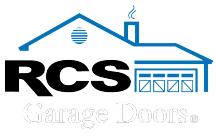
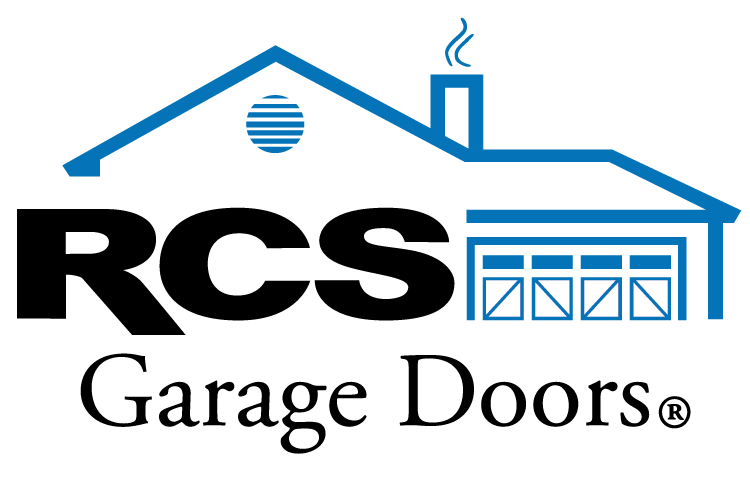
 Register My Door
Register My Door
